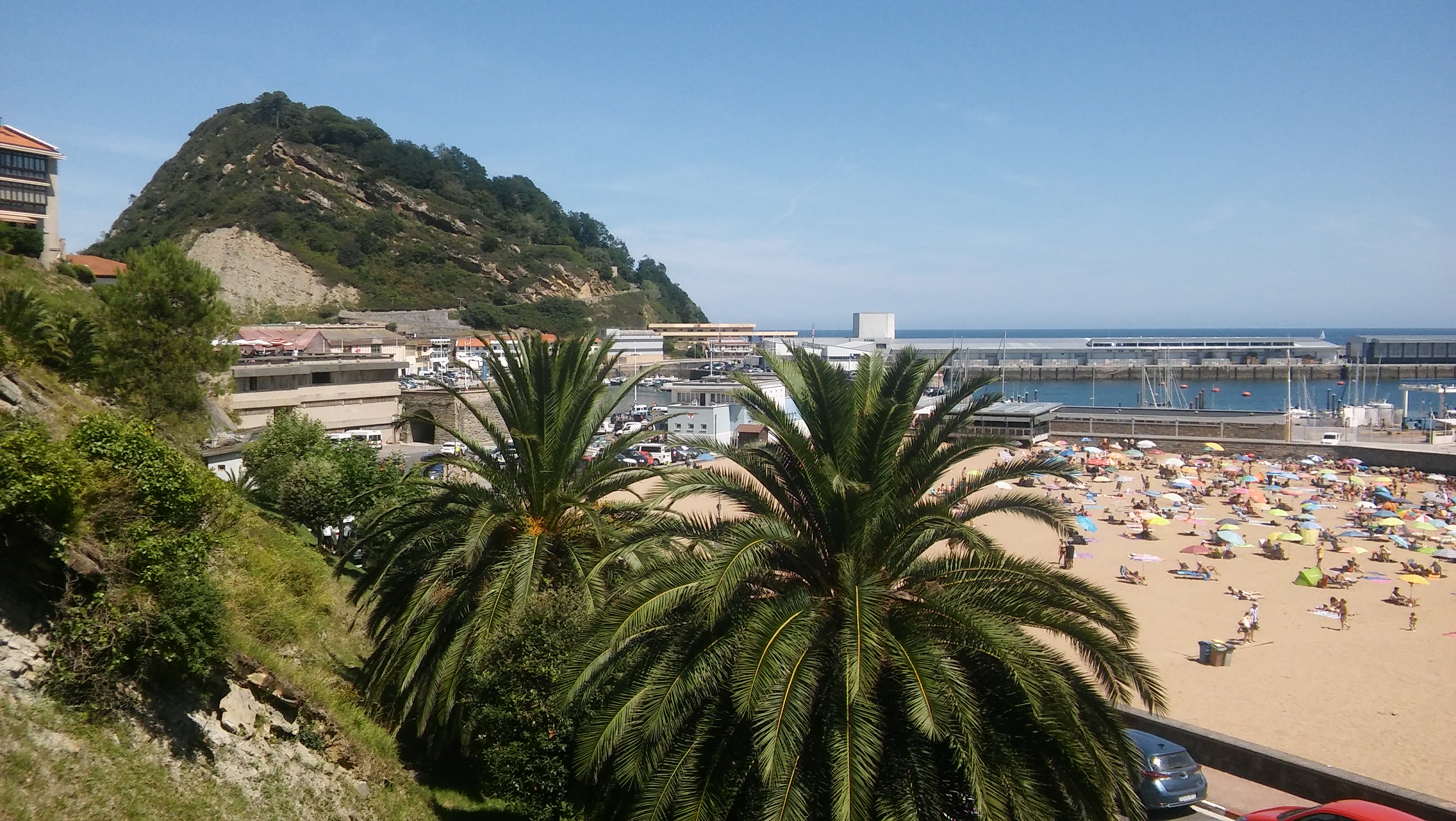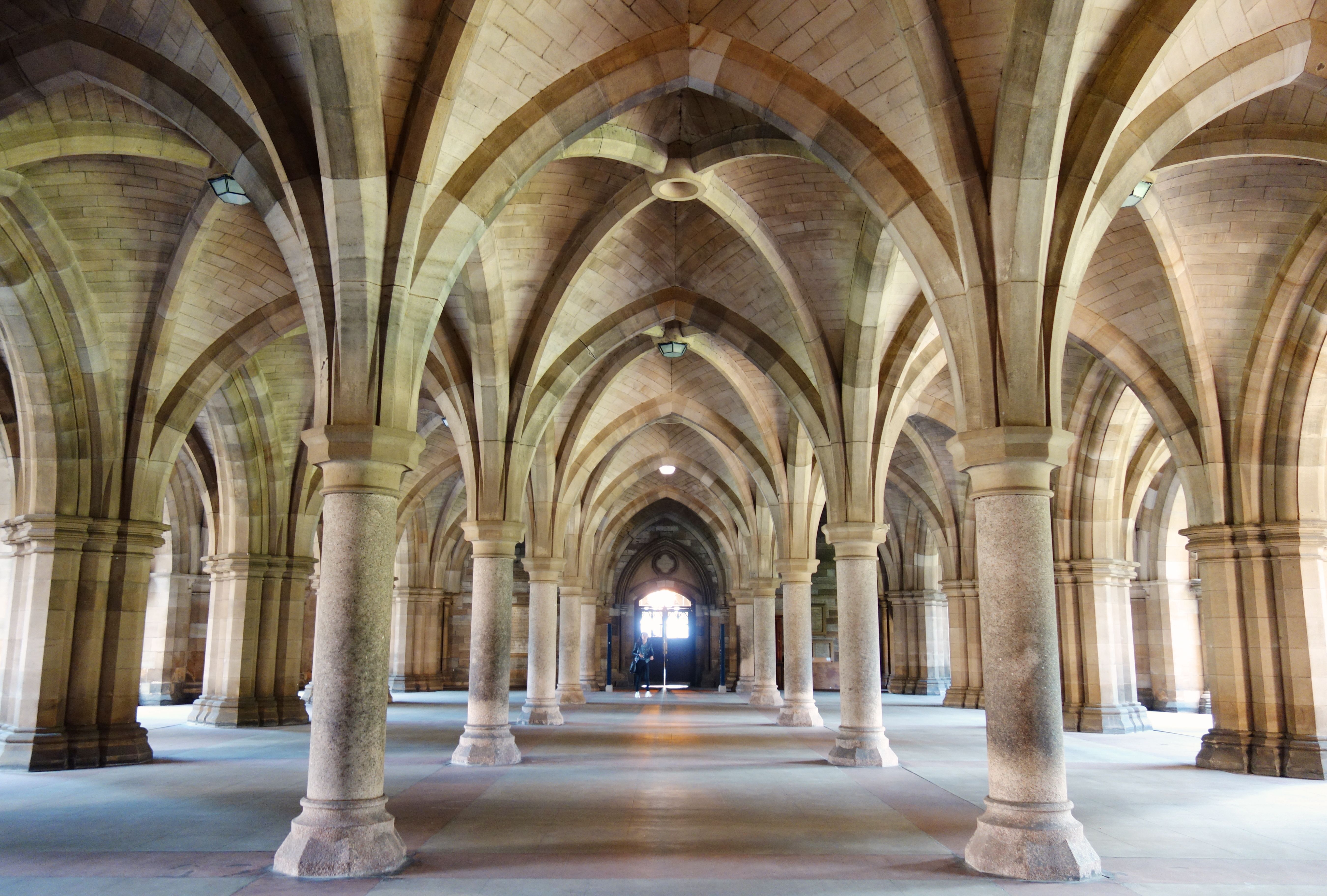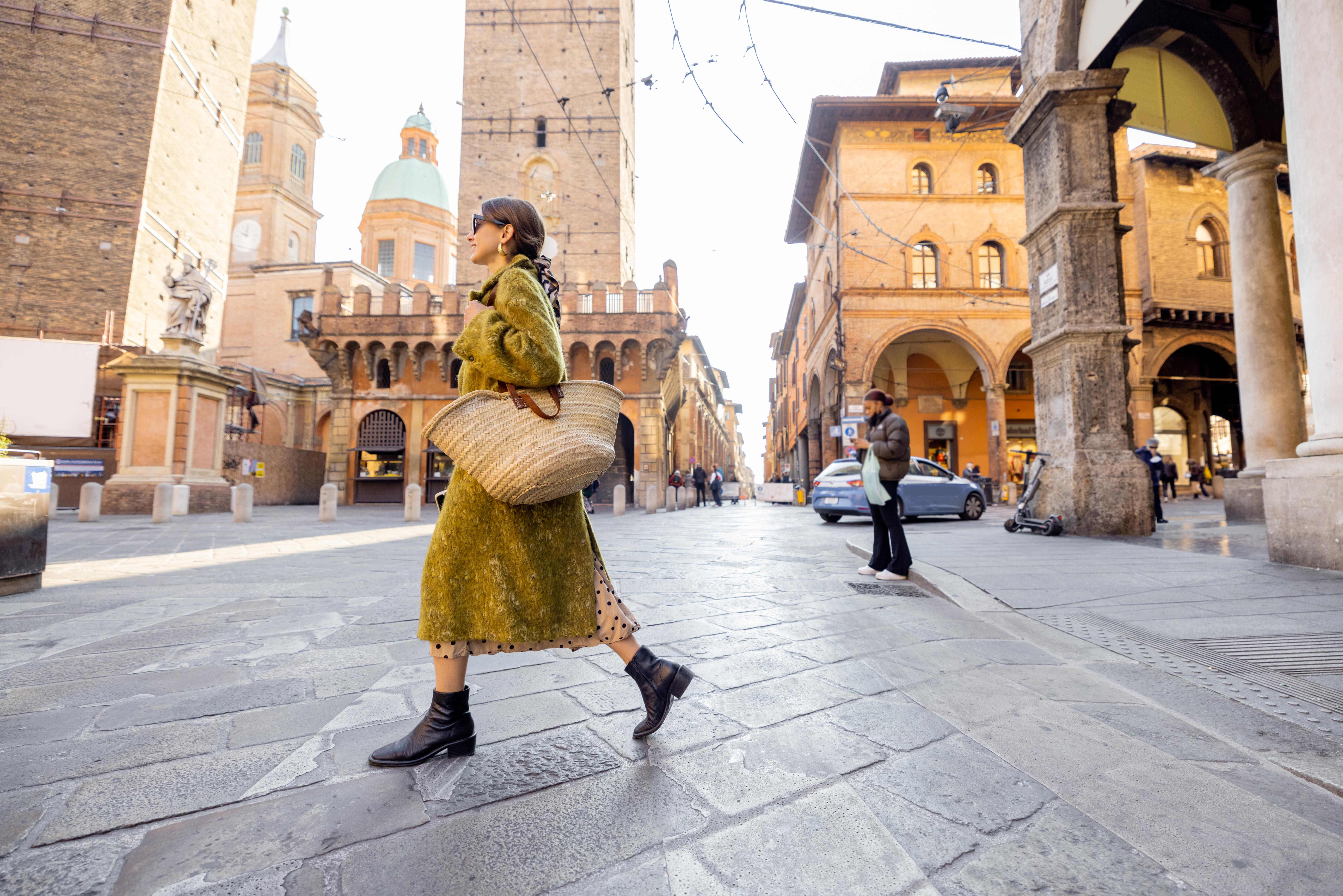26 Stunning Old-World Cities That Still Feel Frozen in Time
Some places don’t just tell history—they let you step inside it. Whether it’s the echo of footsteps on cobblestone streets, the towering grandeur of centuries-old architecture, or the whispers of stories carried by ancient walls, historic cities have a way of transporting you back in time. These destinations aren’t just relics of the past; they are living, breathing pieces of history, where tradition and modern life intertwine seamlessly. In this expanded list, we take you on a journey through 26 of the most stunning historic cities—places where time seems to slow down, and every corner holds a story waiting to be uncovered. From medieval fortresses and Renaissance splendor to ancient ruins and fairytale streets, these cities offer an escape into the past while thriving in the present. This isn’t just about admiring old buildings or learning historical facts—it’s about feeling the spirit of the past come alive, experiencing cultures shaped by centuries, and discovering how history continues to shape our world today. Get ready to wander through time as we explore the breathtaking historic cities that promise an unforgettable glimpse into another era.
1. Rome: The Eternal City
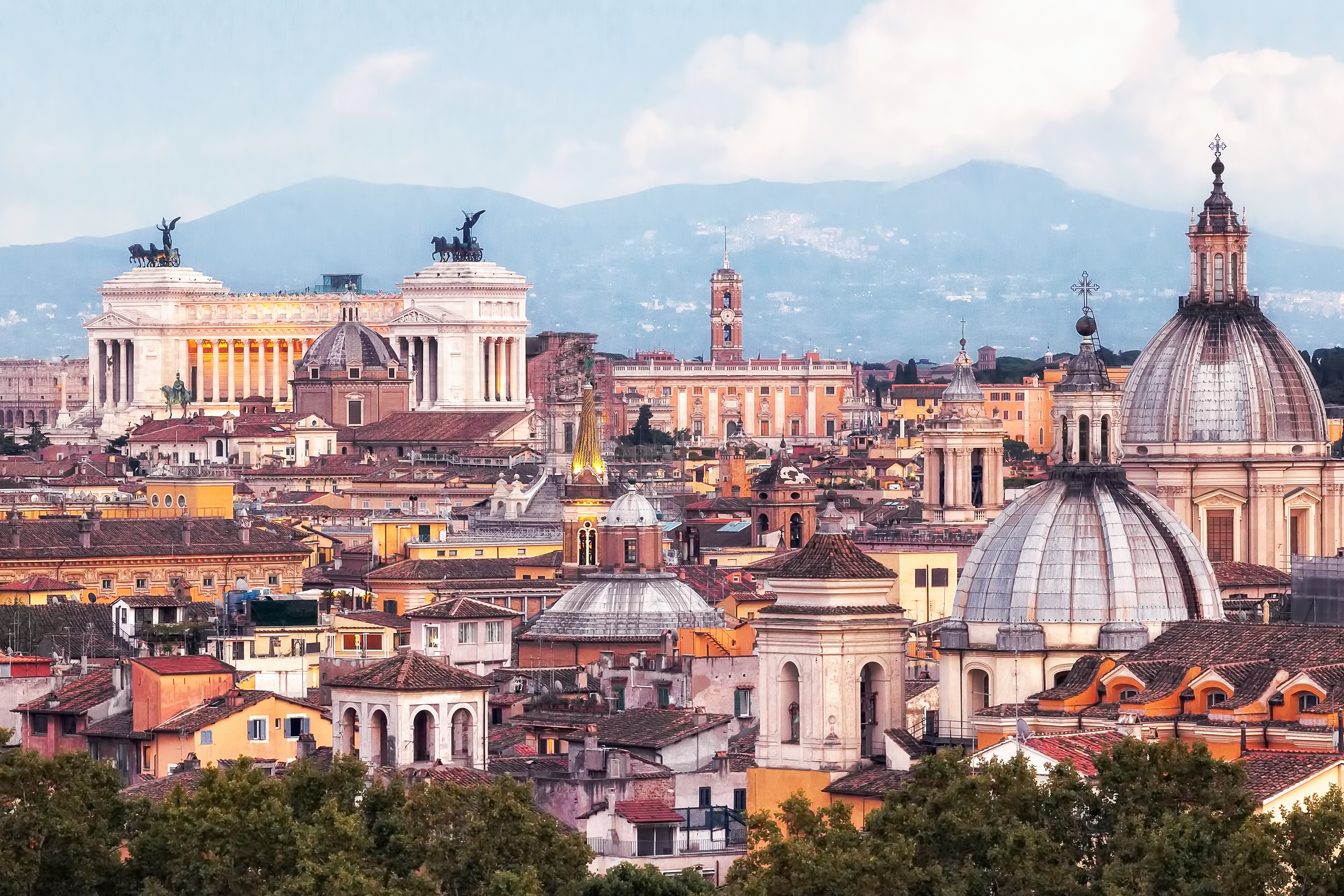
Rome, often referred to as the Eternal City, is a testament to the grandeur of ancient civilizations. With its origins dating back to 753 BC, Rome has been a center of power, culture, and religion for centuries. Walking through the city is like flipping through the pages of a history book; every corner reveals a story from the past. The Colosseum, an iconic symbol of Roman engineering, stands as a reminder of the empire's might and the gladiatorial games that once entertained thousands. The Roman Forum, once the heart of political life, now offers a glimpse into the daily lives of ancient Romans. Beyond its ancient ruins, Rome is a city of art and religion. The Vatican City, an independent city-state within Rome, is the spiritual center of the Catholic Church and home to masterpieces like Michelangelo's Sistine Chapel ceiling. The city's rich history is complemented by its vibrant culture, with bustling piazzas, lively markets, and a culinary scene that reflects its diverse influences. Rome's ability to seamlessly blend the ancient with the modern makes it a timeless city that continues to captivate visitors from around the world.
2. Athens: The Cradle of Western Civilization
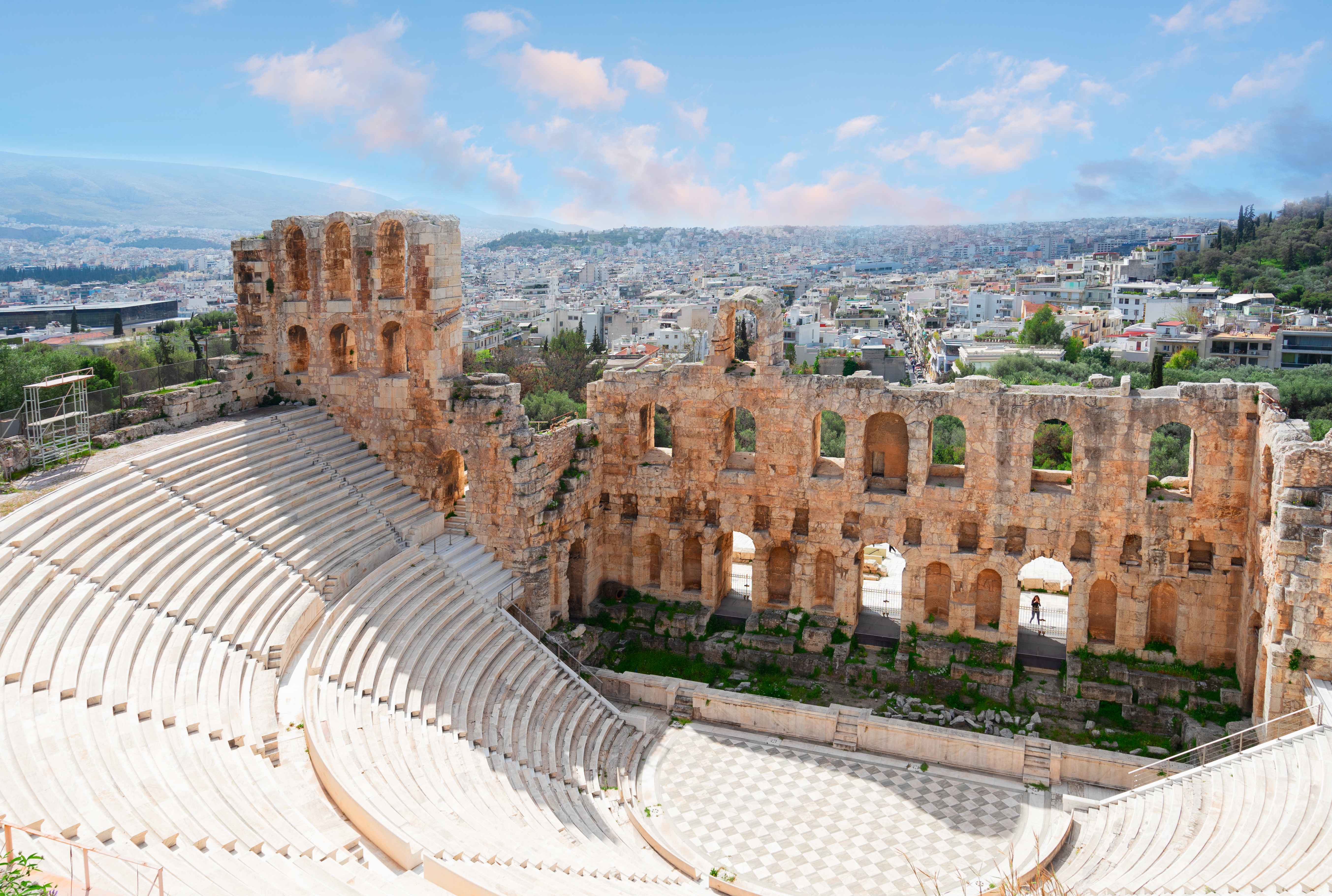
Athens, the capital of Greece, is often hailed as the cradle of Western civilization. It was here that democracy was born, and great philosophers like Socrates, Plato, and Aristotle laid the foundations of Western thought. The city's most iconic landmark, the Acropolis, rises majestically above the modern cityscape, a symbol of ancient Greek achievement and architectural prowess. The Parthenon, dedicated to the goddess Athena, stands as a testament to the artistic and cultural heights reached by the ancient Greeks. The city's historical significance extends beyond its monuments. The Agora, once the bustling marketplace and social hub of ancient Athens, offers insights into the daily lives of its citizens. Today, Athens is a vibrant metropolis that blends its rich history with a dynamic modern culture. Its neighborhoods, such as Plaka and Monastiraki, are alive with the sounds of street musicians, the aromas of traditional Greek cuisine, and the chatter of locals and tourists alike. Athens is a city where the past is ever-present, inviting visitors to explore its ancient roots while experiencing its contemporary vibrancy.
3. Cairo: The Jewel of the Nile
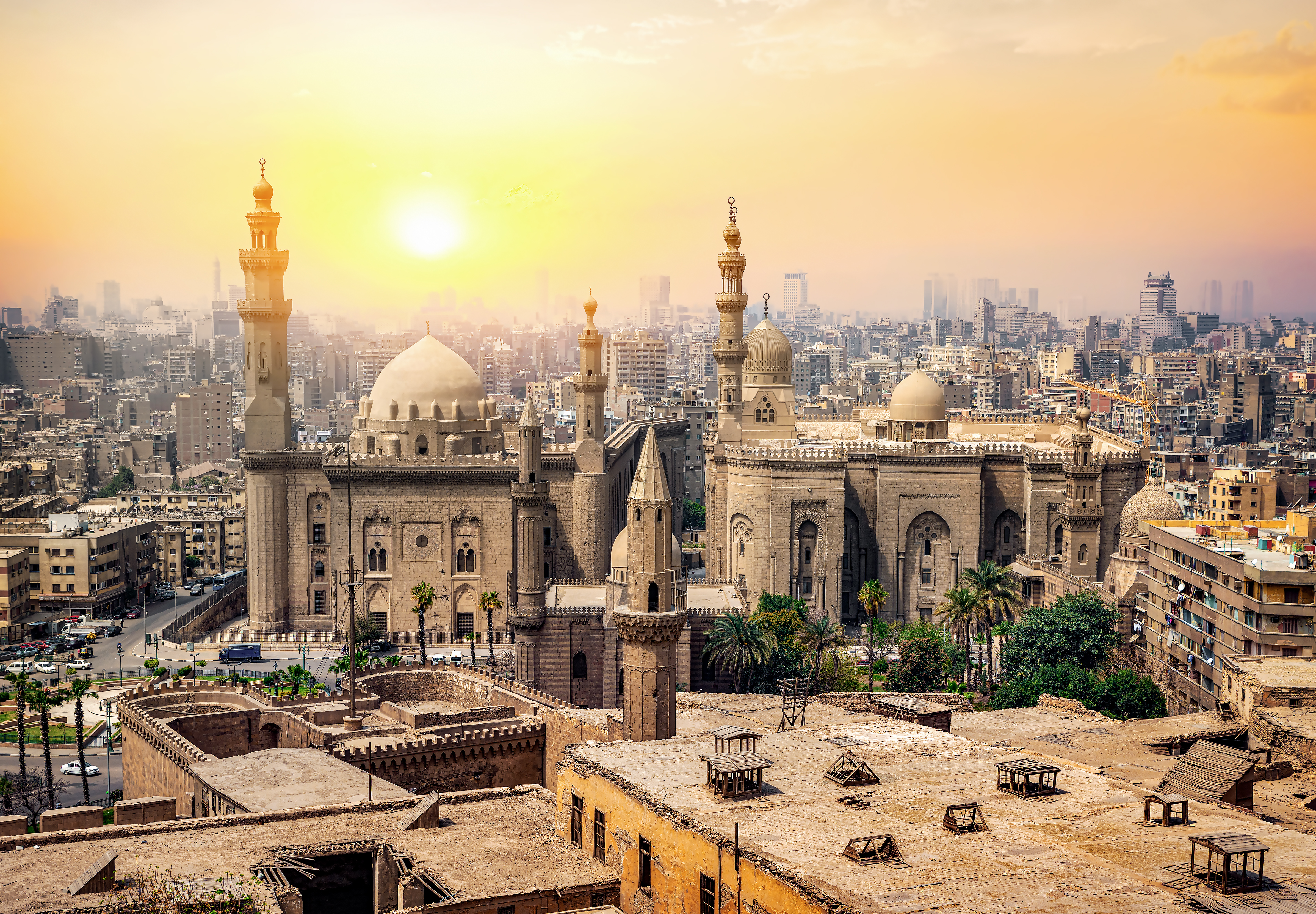
Cairo, the capital of Egypt, is a city where ancient history and modern life coexist in harmony. Known as the "Jewel of the Nile," Cairo is home to some of the world's most iconic historical sites, including the Great Pyramids of Giza and the Sphinx. These ancient wonders have fascinated travelers for centuries, standing as enduring symbols of Egypt's rich and storied past. The pyramids, built as tombs for the pharaohs, are architectural marvels that continue to intrigue archaeologists and historians. Beyond its ancient monuments, Cairo is a city of vibrant culture and bustling energy. The Khan El Khalili bazaar, with its labyrinthine alleys and vibrant stalls, offers a sensory overload of sights, sounds, and smells. The city's Islamic architecture, showcased in structures like the Al-Azhar Mosque and the Citadel, reflects its historical significance as a center of Islamic learning and culture. Cairo's blend of ancient and modern, traditional and contemporary, makes it a city that offers a unique journey through time.
4. Kyoto: The Heart of Japan's Cultural Heritage
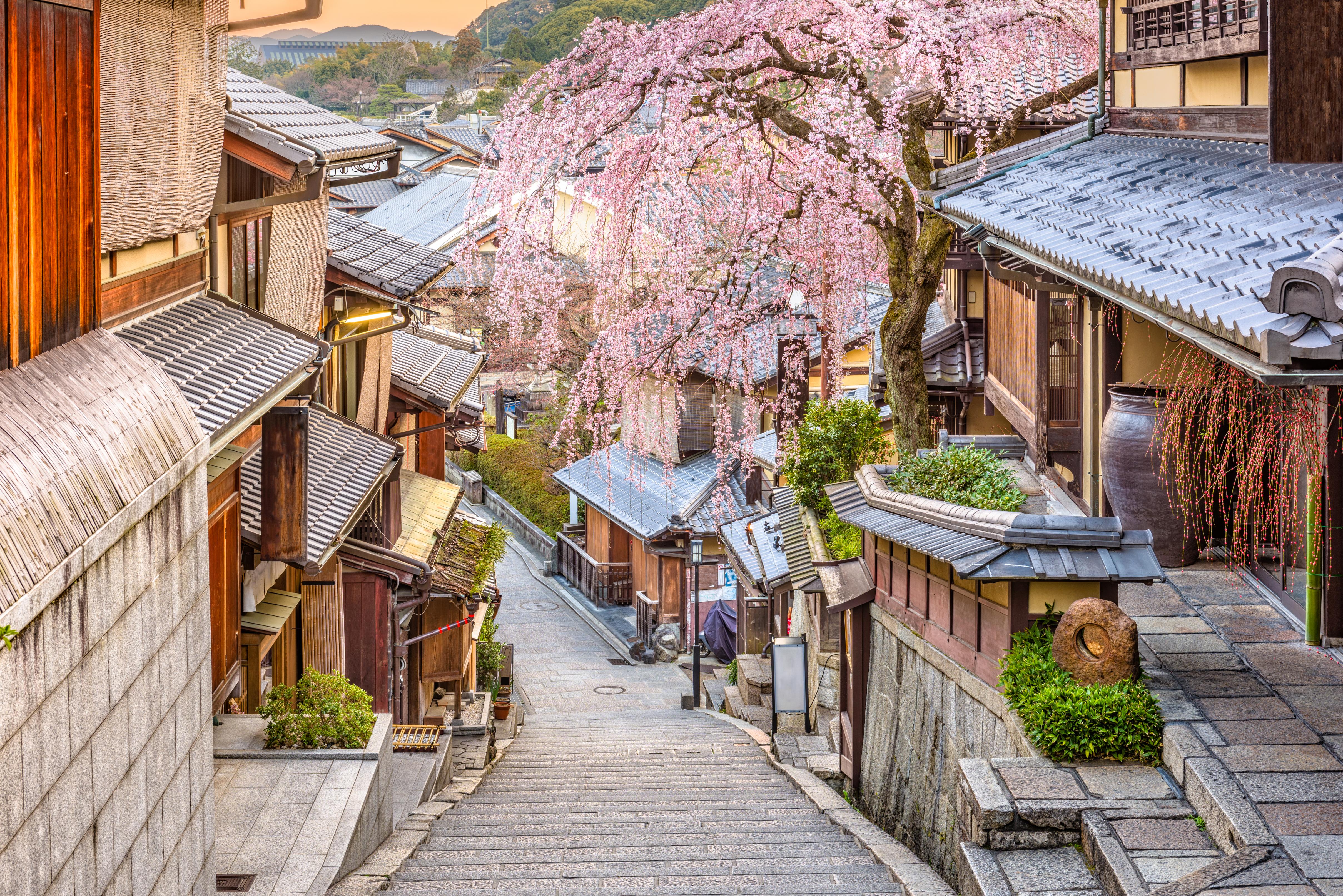
Kyoto, once the capital of Japan, is a city that embodies the essence of Japanese tradition and culture. Known for its well-preserved temples, shrines, and gardens, Kyoto offers a glimpse into Japan's rich historical and cultural heritage. The city's iconic Kinkaku-ji, or Golden Pavilion, is a stunning example of traditional Japanese architecture, reflecting the beauty of nature in its serene surroundings. The Fushimi Inari Shrine, with its thousands of vermillion torii gates, invites visitors to embark on a spiritual journey through its sacred paths. Kyoto's historical significance is complemented by its vibrant cultural scene. The city's geisha district, Gion, offers a rare opportunity to experience the traditional art of geisha performance, while its tea houses provide a taste of the ancient tea ceremony. Kyoto's commitment to preserving its cultural heritage is evident in its festivals, such as the Gion Matsuri, which celebrates the city's history and traditions. As a city that honors its past while embracing the present, Kyoto offers a timeless journey into the heart of Japanese culture.
5. Istanbul: Where East Meets West
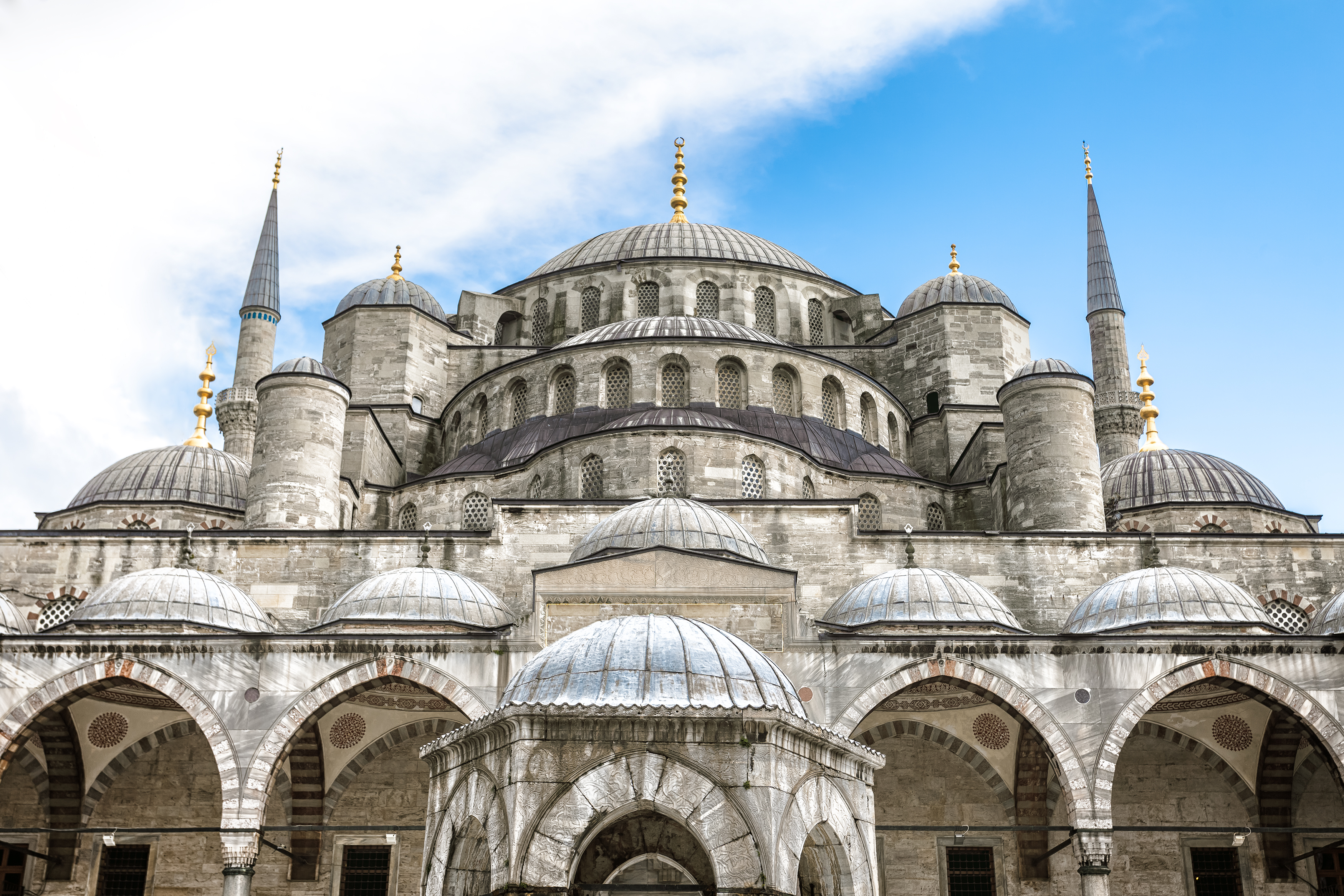
Istanbul, straddling the continents of Europe and Asia, is a city where East meets West in a harmonious blend of cultures and histories. Once known as Byzantium and later Constantinople, Istanbul has been a center of trade, culture, and power for millennia. The city's rich history is reflected in its diverse architecture, from the majestic Hagia Sophia, a masterpiece of Byzantine architecture, to the stunning Blue Mosque, a symbol of Ottoman grandeur. Istanbul's unique position as a crossroads of civilizations is evident in its vibrant cultural scene. The Grand Bazaar, one of the world's largest and oldest covered markets, offers a sensory experience of sights, sounds, and smells, while the city's diverse culinary scene reflects its multicultural heritage. The Bosphorus Strait, which divides the city, offers breathtaking views and a reminder of Istanbul's strategic importance throughout history. As a city that bridges continents and cultures, Istanbul offers a timeless journey through the ages.
6. Jerusalem: A City of Faith and History
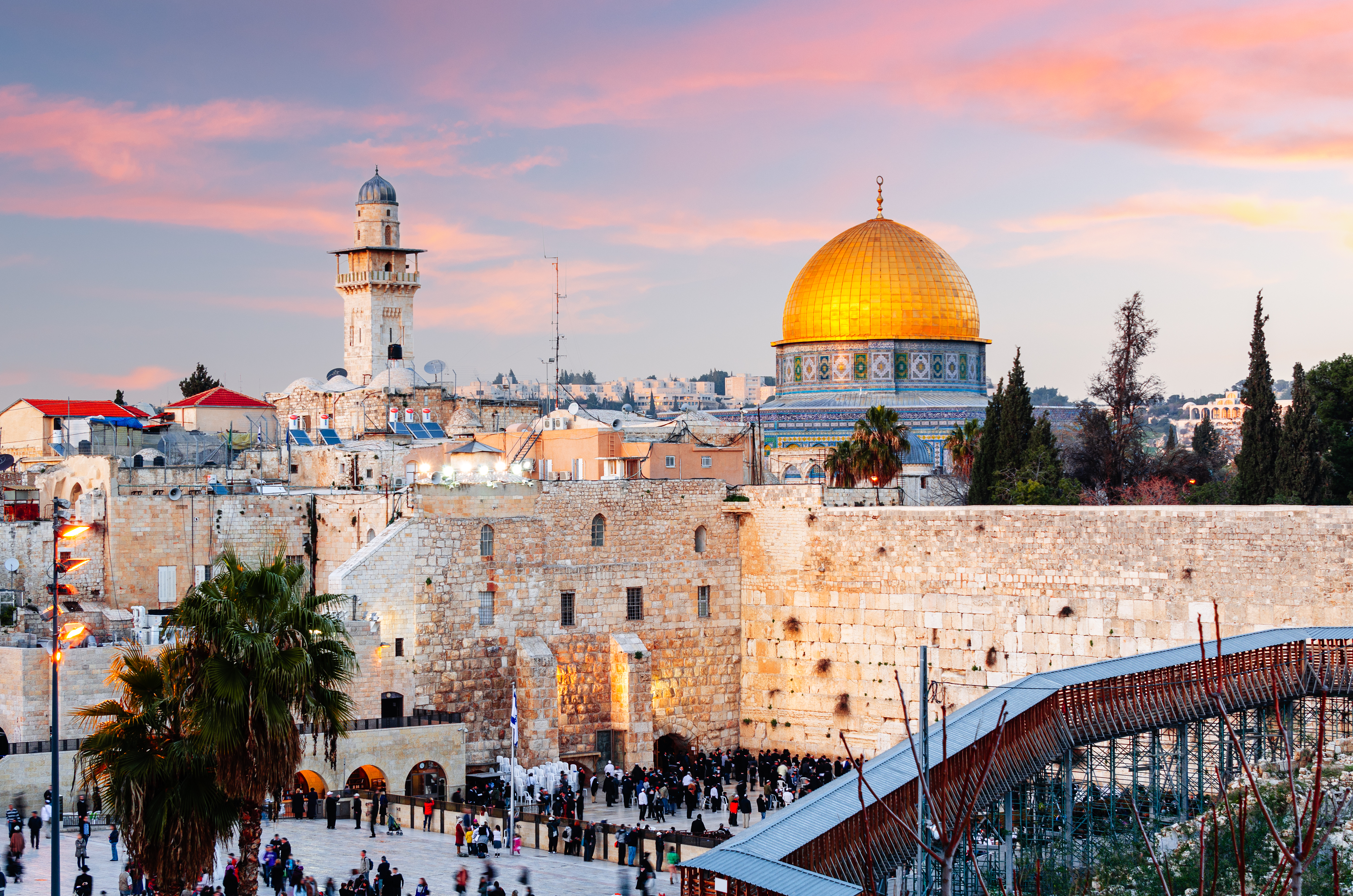
Jerusalem, a city sacred to Judaism, Christianity, and Islam, is a place where history and faith intertwine. With a history spanning thousands of years, Jerusalem is a city of profound religious significance and historical depth. The Western Wall, a remnant of the Second Temple, is a sacred site for Jews, while the Church of the Holy Sepulchre is revered by Christians as the site of Jesus' crucifixion and resurrection. The Dome of the Rock, an iconic symbol of Islamic architecture, marks the spot where Muslims believe the Prophet Muhammad ascended to heaven. Jerusalem's historical and religious significance is complemented by its vibrant cultural scene. The city's Old City, with its narrow alleys and ancient walls, offers a journey through time, while its diverse neighborhoods reflect its multicultural heritage. Jerusalem's ability to preserve its historical and religious essence while embracing modernity makes it a city that offers a timeless journey through faith and history.
7. Fez: The Soul of Morocco
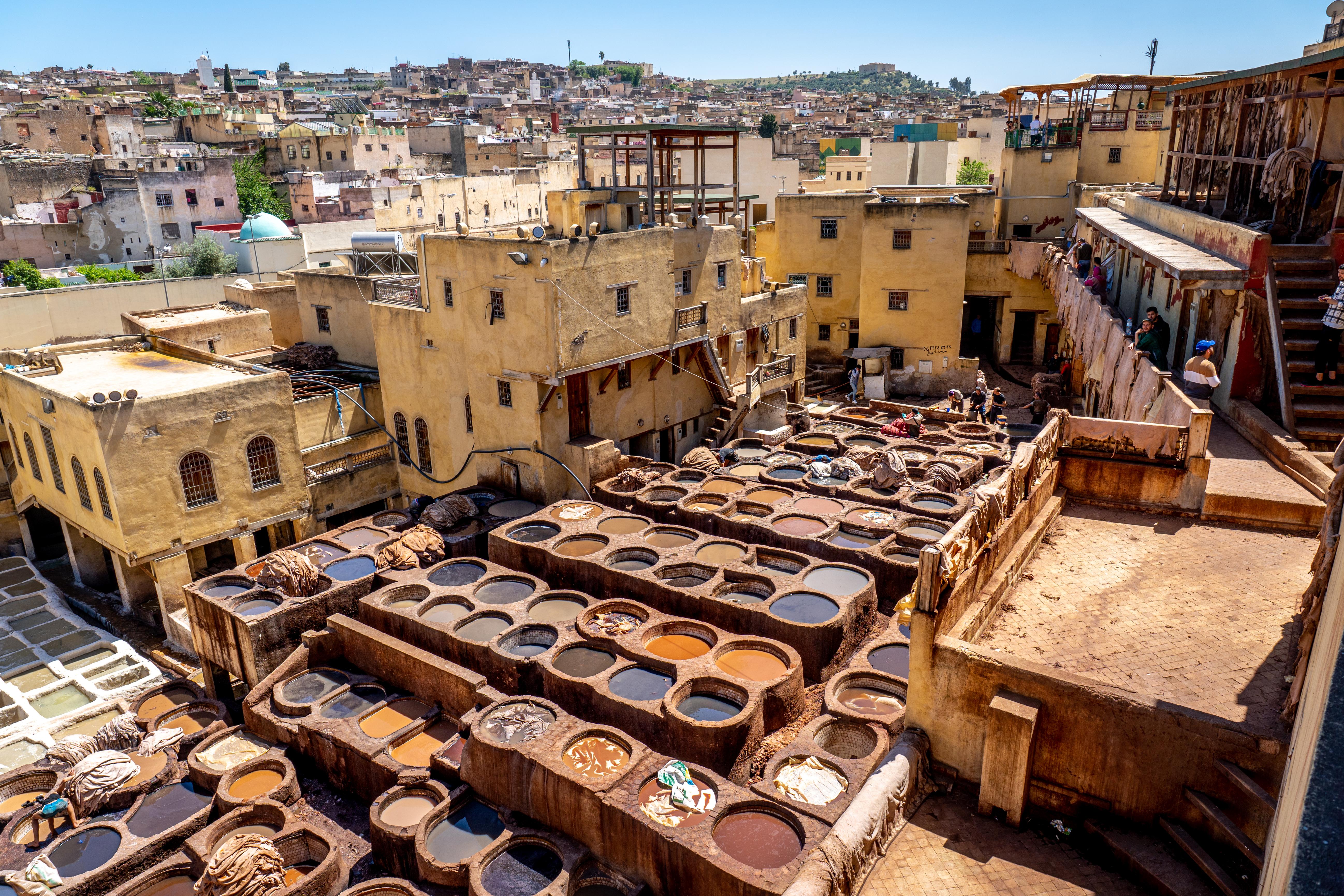
Fez, one of Morocco's oldest cities, is a place where tradition and history are woven into the fabric of daily life. Known for its well-preserved medieval architecture and vibrant souks, Fez offers a glimpse into Morocco's rich cultural heritage. The city's medina, a UNESCO World Heritage site, is a labyrinth of narrow streets, bustling markets, and historic buildings, including the Al Quaraouiyine University, one of the oldest universities in the world. Fez's historical significance is complemented by its vibrant cultural scene. The city's traditional crafts, from leatherwork to pottery, are celebrated in its bustling markets, while its culinary scene offers a taste of traditional Moroccan cuisine. Fez's commitment to preserving its cultural heritage is evident in its festivals, such as the Fez Festival of World Sacred Music, which celebrates the city's diverse musical traditions. As a city that honors its past while embracing the present, Fez offers a timeless journey into the soul of Morocco.
8. Beijing: The Heart of China's Imperial History
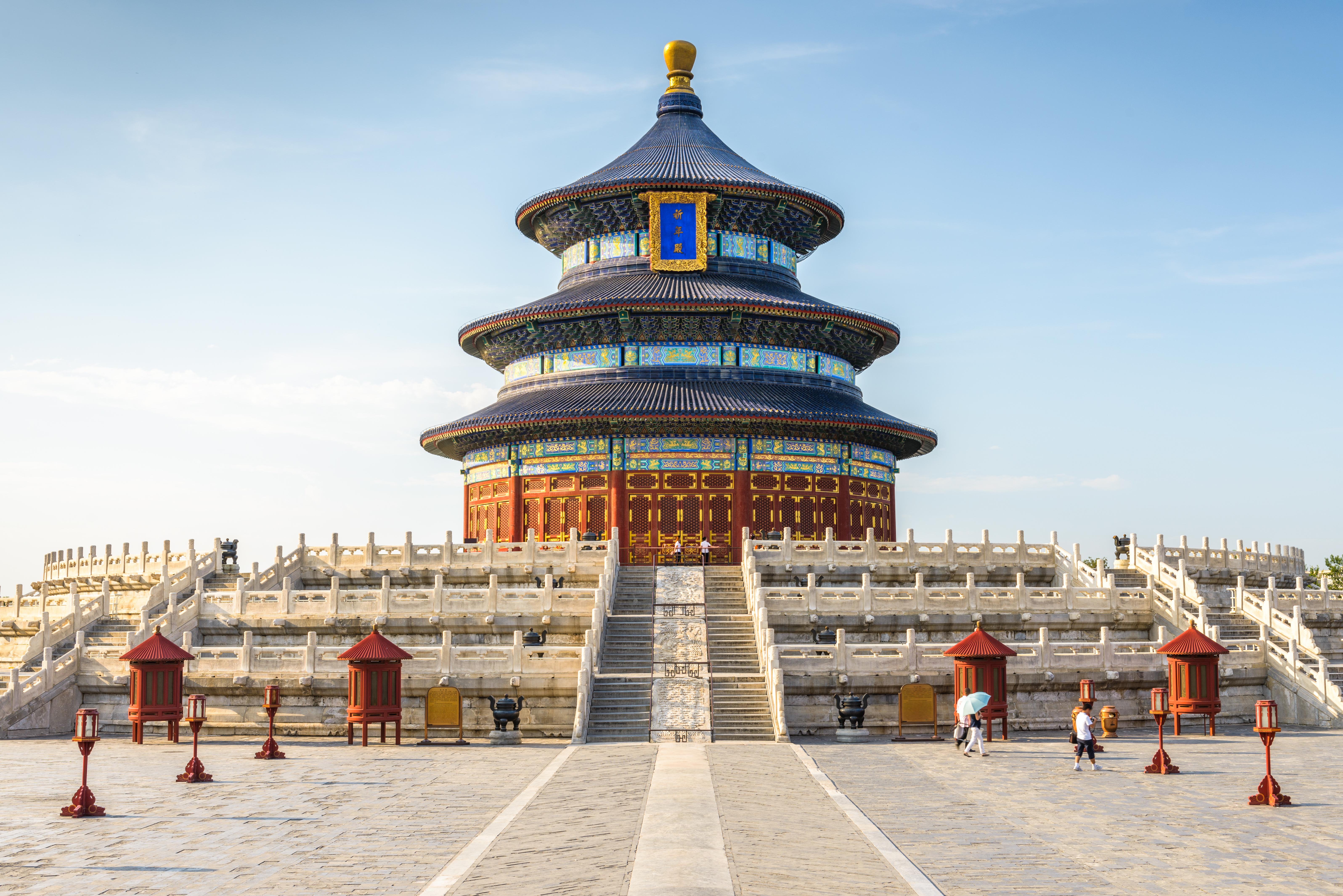
Beijing, the capital of China, is a city that embodies the grandeur of China's imperial history. With a history spanning over three millennia, Beijing is home to some of the world's most iconic historical sites, including the Forbidden City and the Great Wall of China. The Forbidden City, once the imperial palace of the Ming and Qing dynasties, is a stunning example of traditional Chinese architecture and a symbol of China's rich cultural heritage. Beijing's historical significance is complemented by its vibrant cultural scene. The city's traditional hutongs, or narrow alleyways, offer a glimpse into the daily lives of its residents, while its modern skyline reflects its rapid development. Beijing's culinary scene, from Peking duck to street food, offers a taste of traditional Chinese cuisine. As a city that honors its past while embracing the present, Beijing offers a timeless journey through China's imperial history.
9. Cusco: The Gateway to the Inca Empire
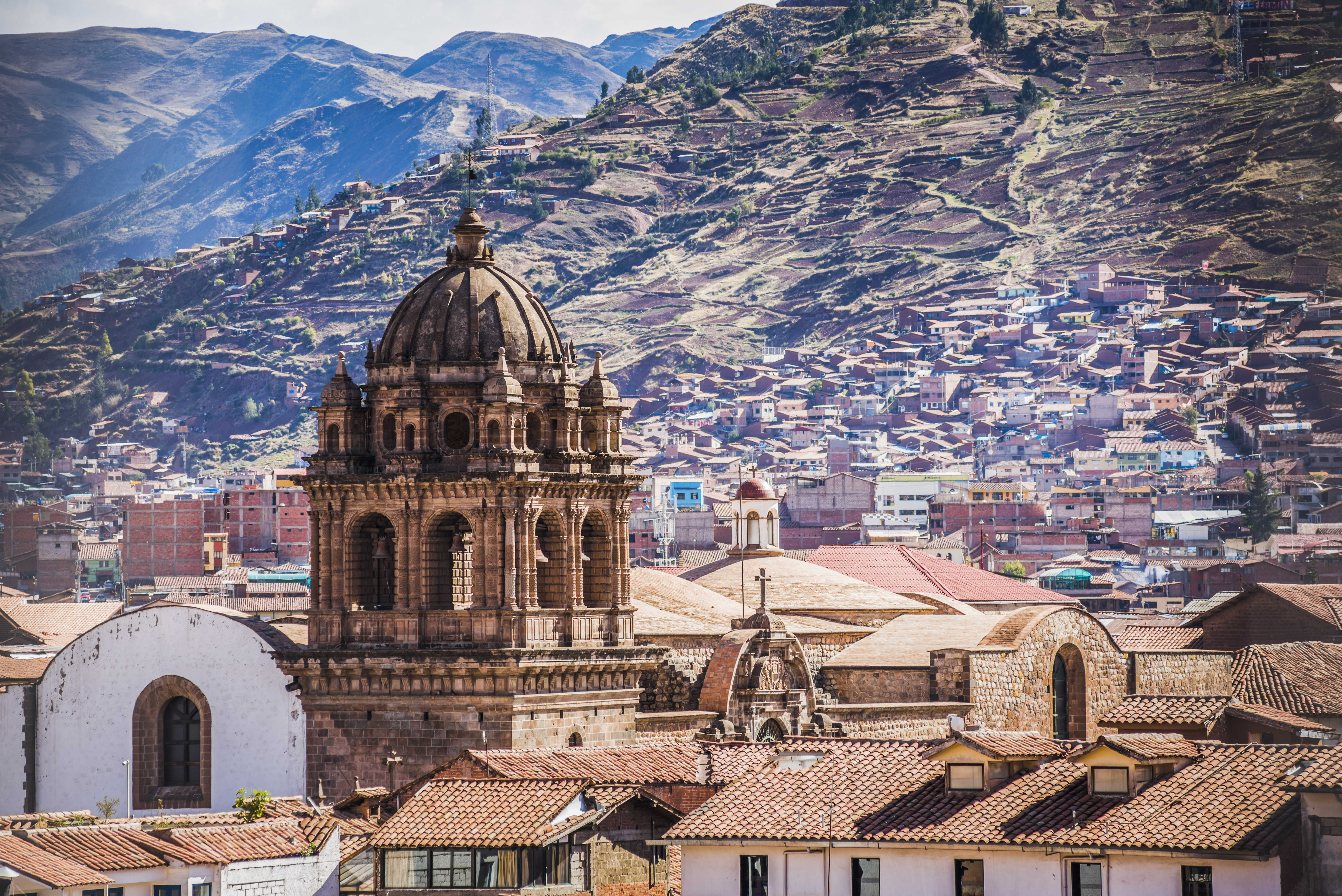
Cusco, once the capital of the Inca Empire, is a city that offers a glimpse into the rich history and culture of ancient Peru. Nestled in the Andes Mountains, Cusco is a UNESCO World Heritage site known for its well-preserved Inca and colonial architecture. The city's most iconic landmark, the Sacsayhuamán fortress, is a testament to the engineering prowess of the Incas and offers stunning views of the surrounding landscape. Cusco's historical significance is complemented by its vibrant cultural scene. The city's traditional festivals, such as Inti Raymi, celebrate the Inca sun god and offer a glimpse into the spiritual beliefs of the ancient Incas. Cusco's culinary scene, from traditional Andean dishes to fusion cuisine, reflects its diverse cultural influences. As a city that honors its past while embracing the present, Cusco offers a timeless journey into the heart of the Inca Empire.
10. Prague: The City of a Hundred Spires
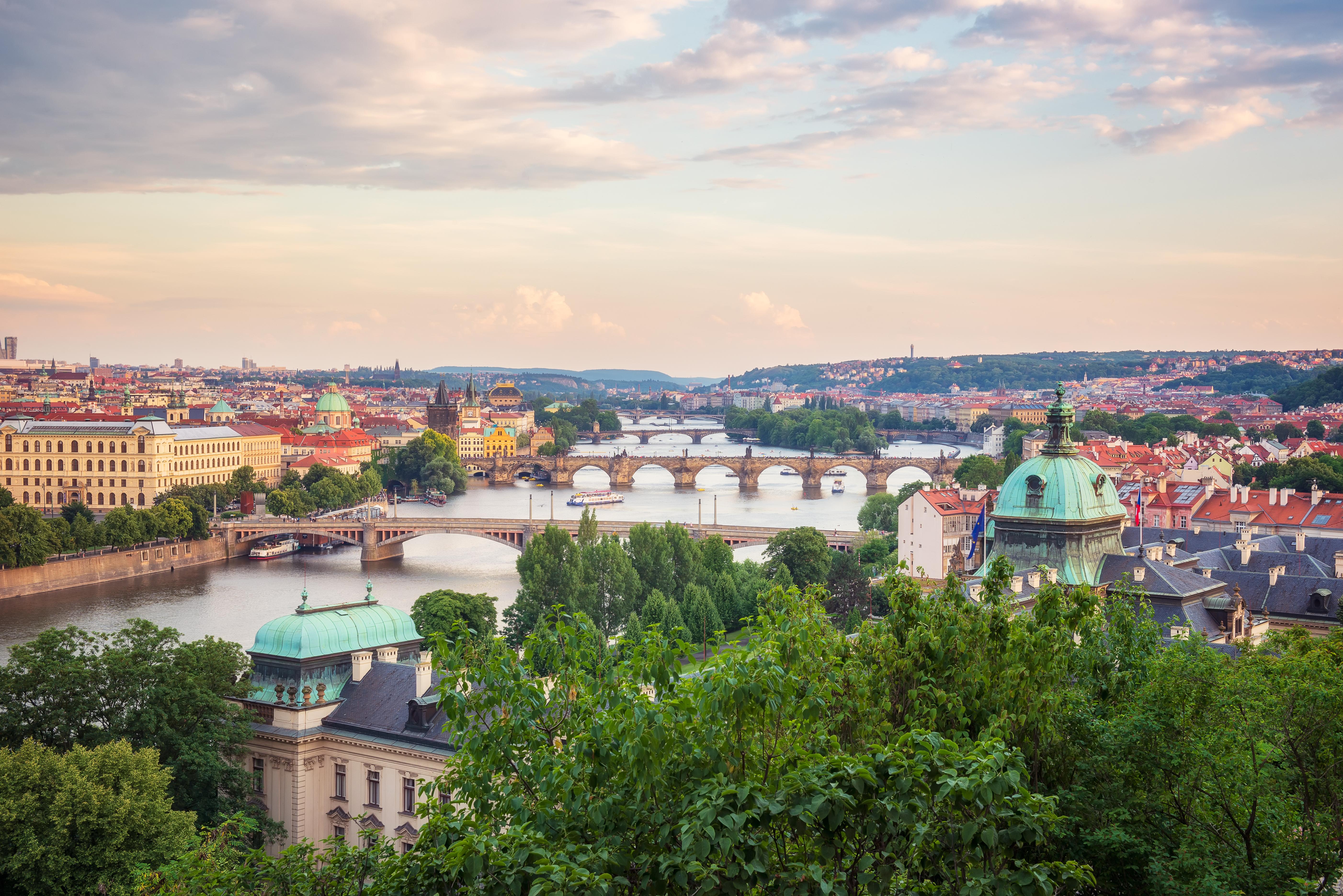
Prague, the capital of the Czech Republic, is a city that enchants visitors with its fairy-tale charm and rich history. Known as the "City of a Hundred Spires," Prague's skyline is dominated by its stunning Gothic and Baroque architecture. The city's most iconic landmark, Prague Castle, is the largest ancient castle in the world and offers breathtaking views of the city below. Prague's historical significance is complemented by its vibrant cultural scene. The city's Old Town Square, with its colorful buildings and bustling atmosphere, is a hub of activity and a testament to its rich history. Prague's music scene, from classical concerts to jazz clubs, reflects its diverse cultural influences. As a city that honors its past while embracing the present, Prague offers a timeless journey through the heart of Central Europe.
11. Petra: The Rose City of the Desert
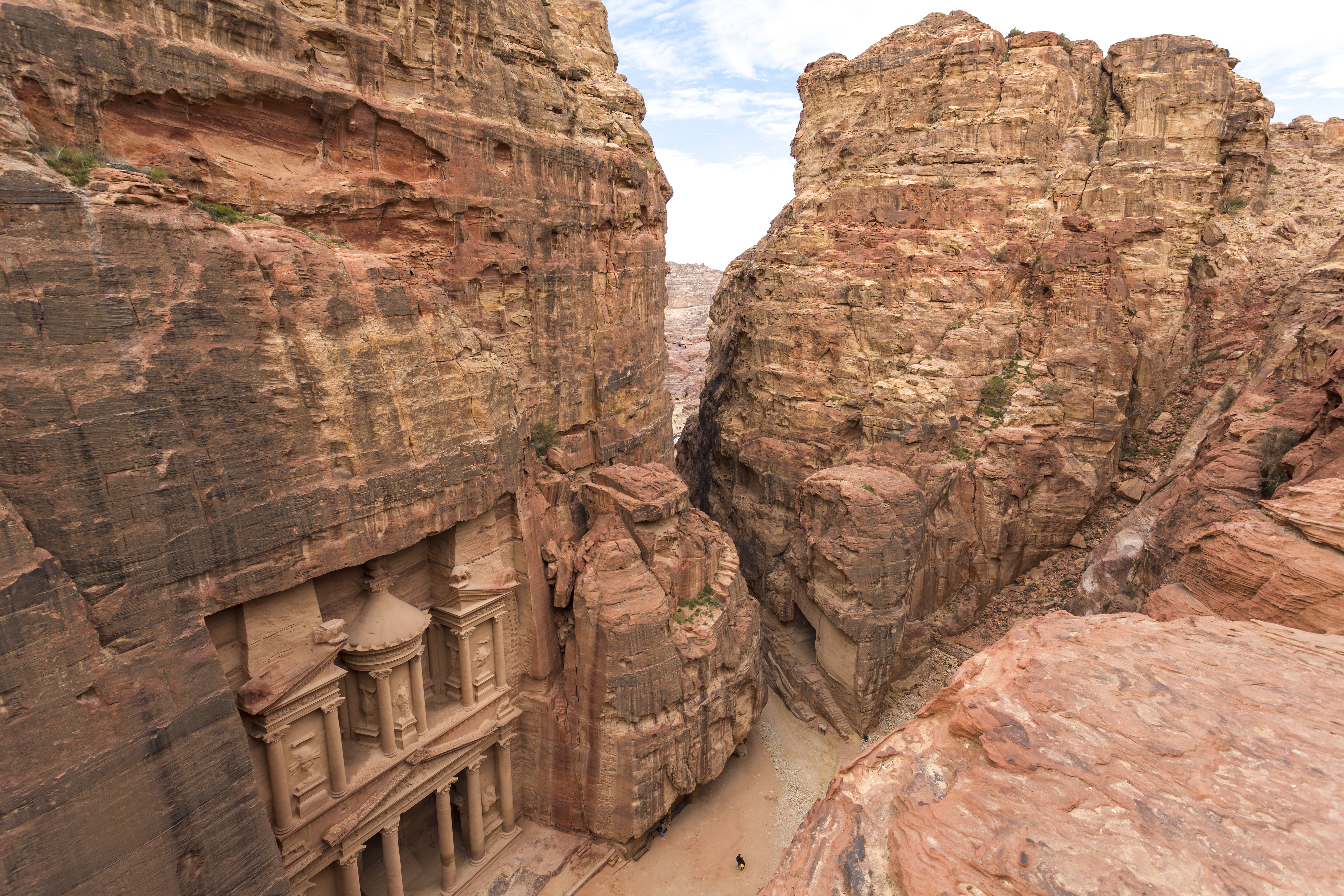
Petra, an ancient city carved into the rose-red cliffs of southern Jordan, is a marvel of ancient engineering and a testament to the ingenuity of the Nabataeans. Known as the "Rose City," Petra was once a thriving center of trade and commerce, strategically located at the crossroads of ancient trade routes. The city's most iconic landmark, the Treasury, is a stunning example of rock-cut architecture and a symbol of Petra's rich history. Petra's historical significance is complemented by its breathtaking natural beauty. The city's narrow canyon, known as the Siq, offers a dramatic entrance to the ancient city, while its surrounding desert landscape provides a stunning backdrop for exploration. Petra's ability to preserve its historical essence while embracing its natural surroundings makes it a city that offers a timeless journey through the heart of the desert.
12. Havana: A Step Back to the 1950s
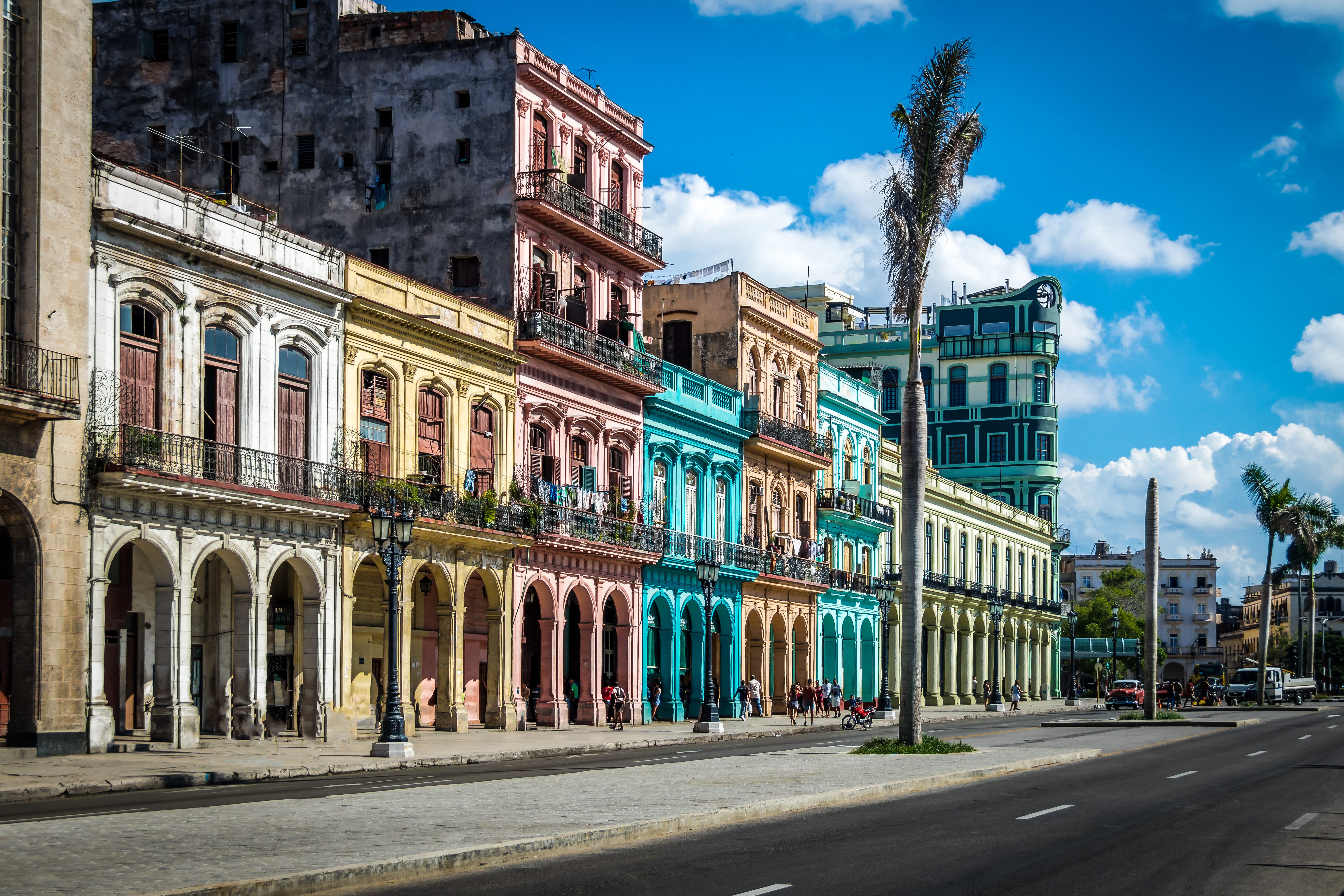
Havana, the capital of Cuba, is a city that offers a unique glimpse into the past with its well-preserved colonial architecture and vibrant culture. Known for its colorful buildings and classic cars, Havana feels like a step back in time to the 1950s. The city's most iconic landmark, the Malecón, is a seafront promenade that offers stunning views of the ocean and a taste of Havana's lively atmosphere. Havana's historical significance is complemented by its vibrant cultural scene. The city's music and dance, from salsa to son, reflect its rich cultural heritage and diverse influences. Havana's culinary scene, from traditional Cuban dishes to fusion cuisine, offers a taste of its unique flavors. As a city that honors its past while embracing the present, Havana offers a timeless journey through the heart of the Caribbean.
13. Varanasi: The Spiritual Heart of India
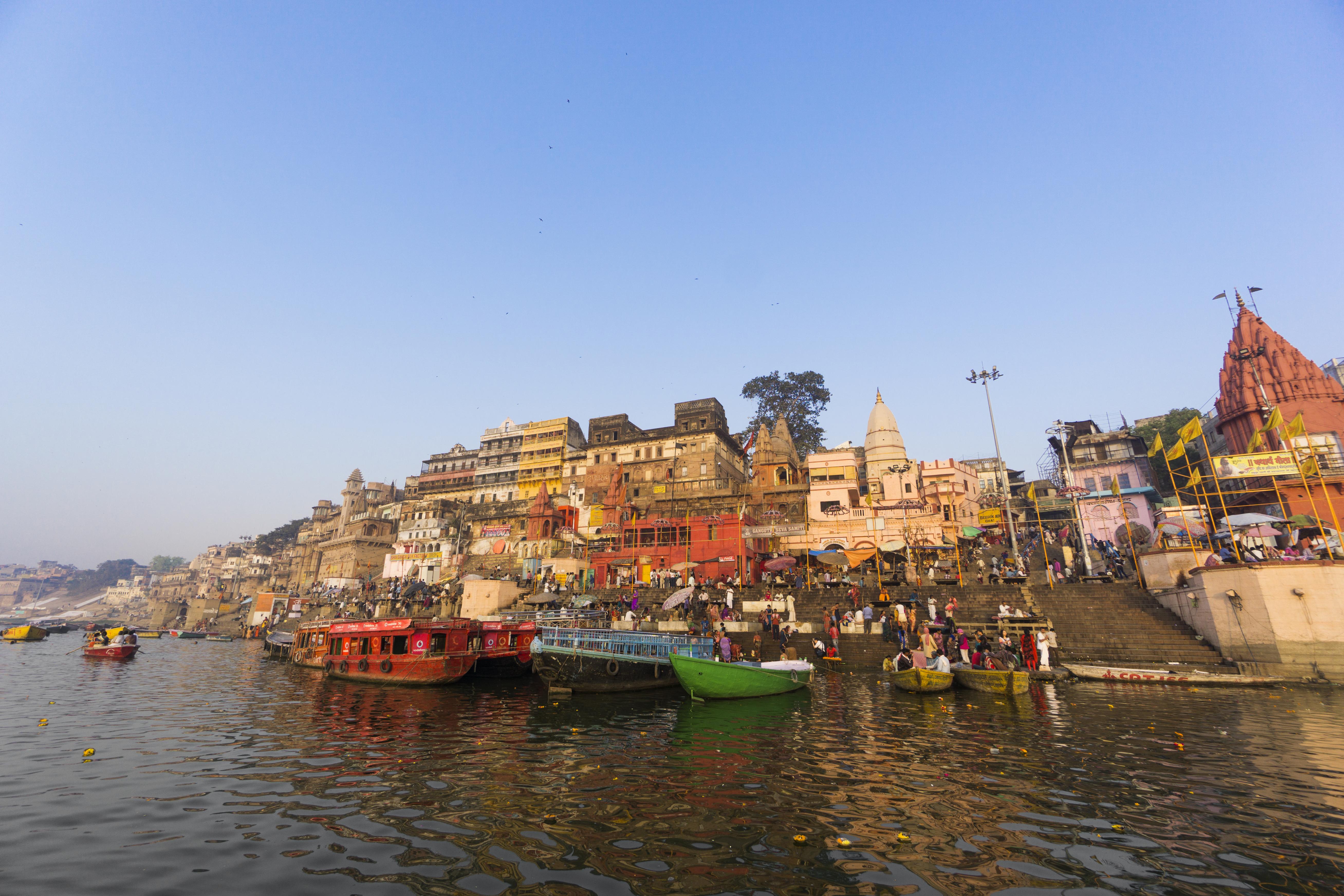
Varanasi, one of the oldest continuously inhabited cities in the world, is a place of profound spiritual significance and historical depth. Located on the banks of the Ganges River, Varanasi is a sacred city for Hindus and a center of pilgrimage and learning. The city's ghats, or steps leading to the river, are a focal point of daily life and religious rituals, offering a glimpse into the spiritual beliefs and practices of its residents. Varanasi's historical significance is complemented by its vibrant cultural scene. The city's traditional music and dance, from classical Indian to folk, reflect its rich cultural heritage. Varanasi's culinary scene, from street food to traditional Indian dishes, offers a taste of its diverse flavors. As a city that honors its past while embracing the present, Varanasi offers a timeless journey through the spiritual heart of India.
14. Florence: The Birthplace of the Renaissance
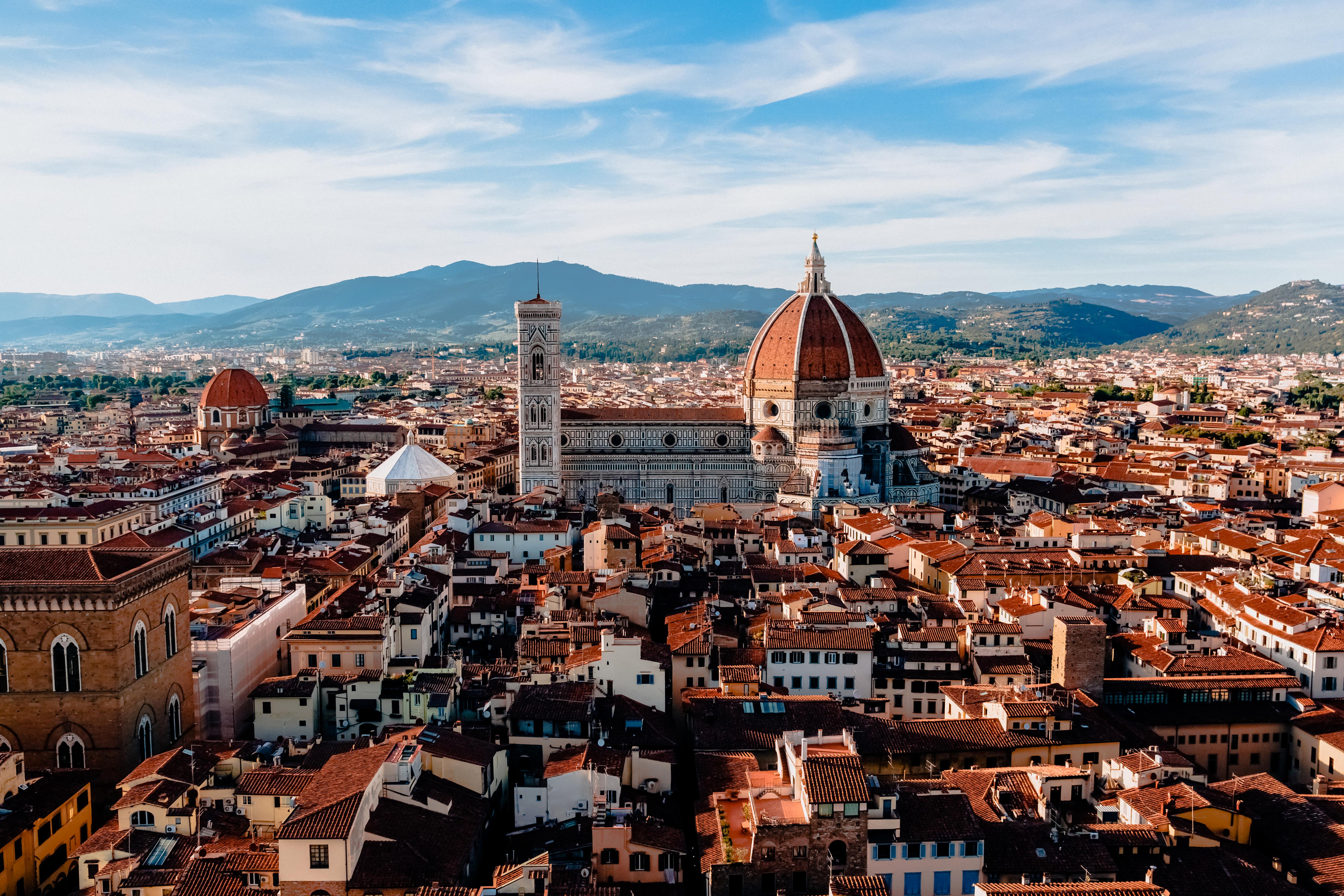
Florence, the capital of Italy's Tuscany region, is a city that embodies the spirit of the Renaissance. Known for its stunning architecture and world-renowned art, Florence offers a glimpse into the cultural and artistic achievements of the Renaissance era. The city's most iconic landmark, the Florence Cathedral, is a masterpiece of Gothic architecture and a symbol of Florence's rich history. Florence's historical significance is complemented by its vibrant cultural scene. The city's museums and galleries, from the Uffizi to the Accademia, house some of the world's most famous works of art, including Michelangelo's David. Florence's culinary scene, from traditional Tuscan dishes to innovative cuisine, reflects its rich cultural heritage. As a city that honors its past while embracing the present, Florence offers a timeless journey through the heart of the Renaissance.
15. Mexico City: A Fusion of Ancient and Modern
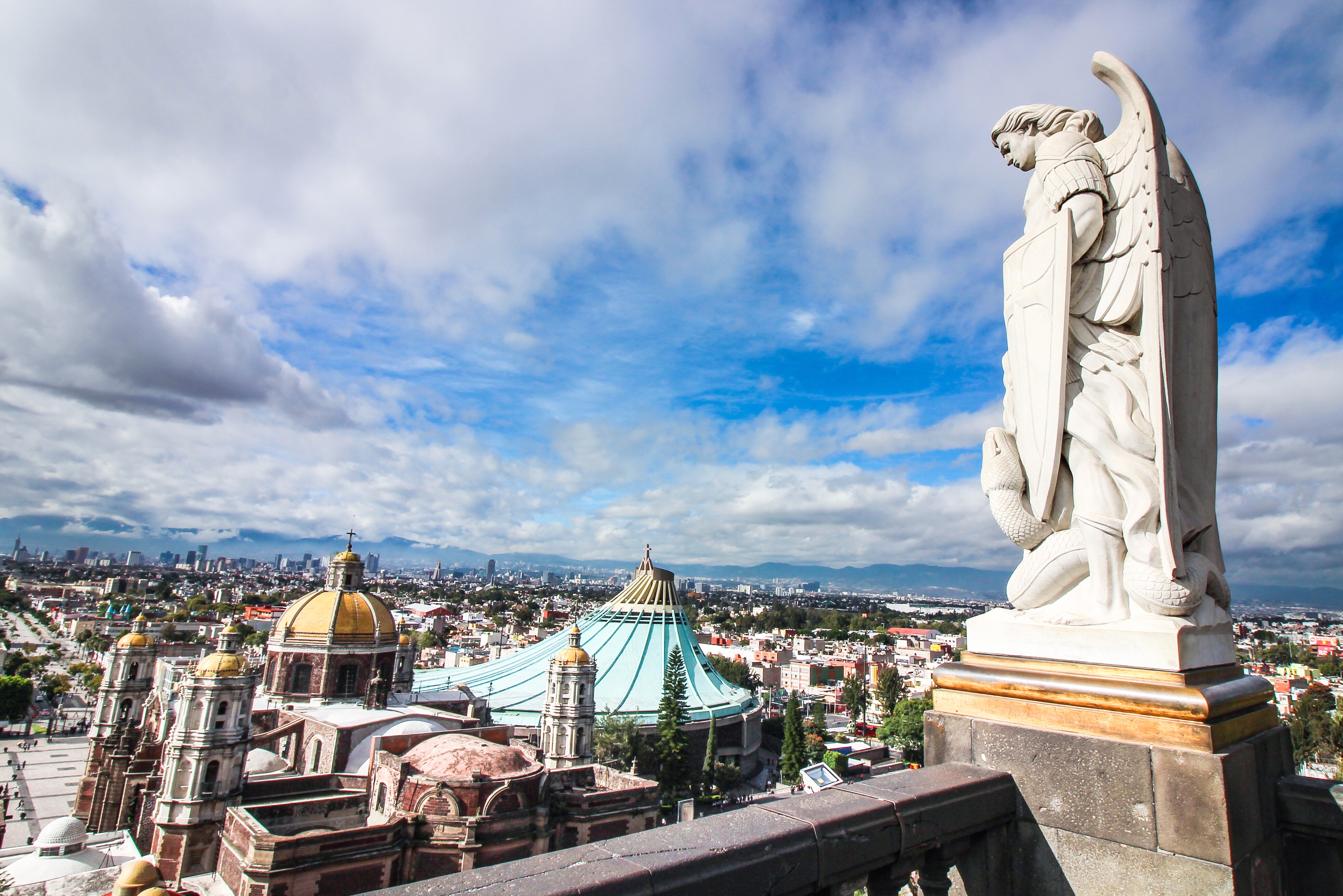
Mexico City, the capital of Mexico, is a city that seamlessly blends ancient history with modern life. With its origins dating back to the Aztec Empire, Mexico City is home to some of the world's most iconic historical sites, including the Templo Mayor and the ancient city of Teotihuacan. The city's most iconic landmark, the Metropolitan Cathedral, is a stunning example of colonial architecture and a symbol of Mexico's rich history. Mexico City's historical significance is complemented by its vibrant cultural scene. The city's neighborhoods, from the historic center to the trendy Roma and Condesa districts, offer a diverse array of experiences, from traditional markets to contemporary art galleries. Mexico City's culinary scene, from street tacos to gourmet cuisine, offers a taste of its rich flavors and diverse influences. As a city that honors its past while embracing the present, Mexico City offers a timeless journey through the heart of Mexico.
16. Machu Picchu: The Lost City of the Incas
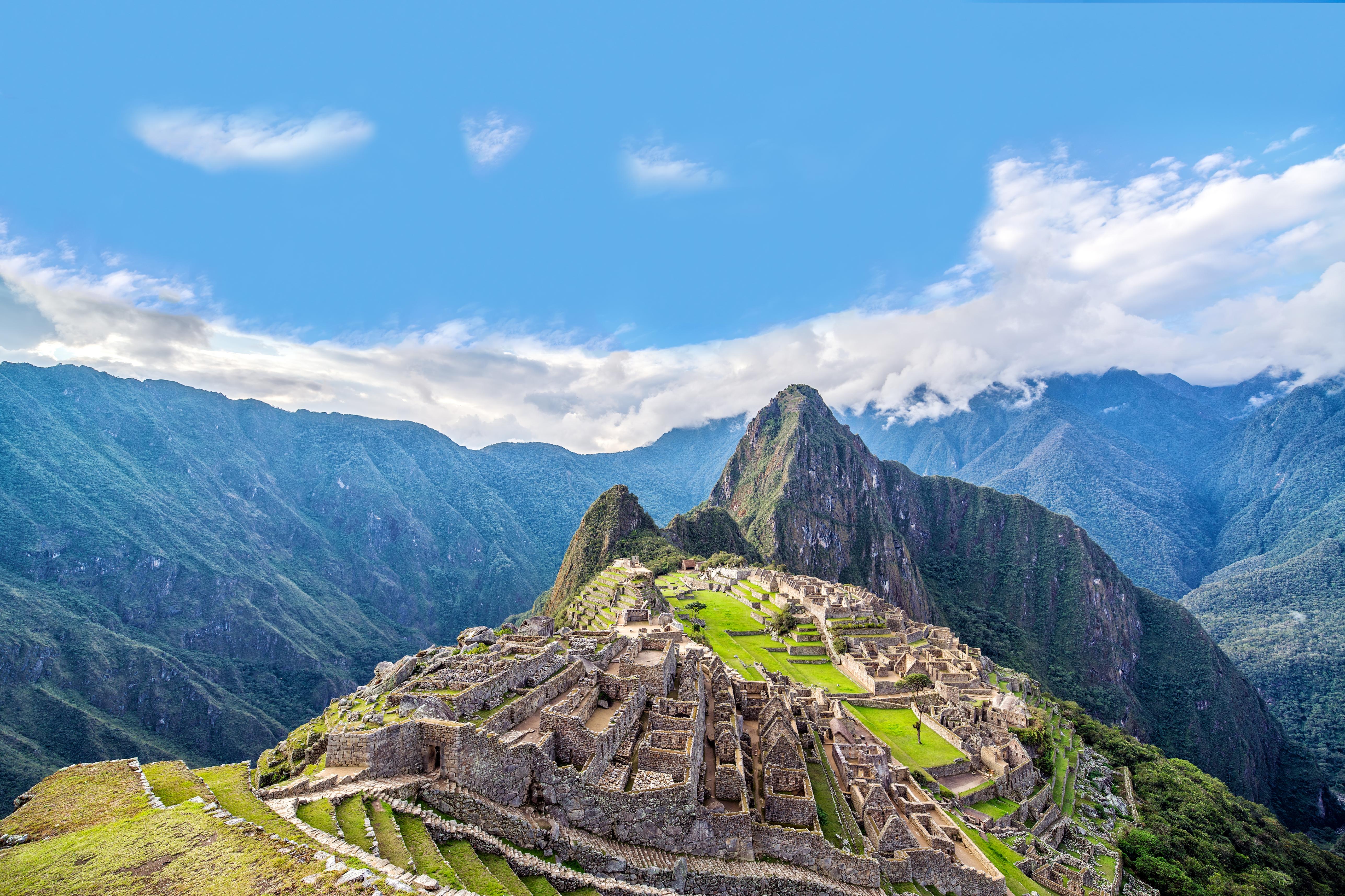
Nestled high in the Andes Mountains of Peru, Machu Picchu is an ancient Inca city that continues to captivate visitors with its stunning location and historical significance. Often referred to as the "Lost City of the Incas," this UNESCO World Heritage site was rediscovered in 1911 by American explorer Hiram Bingham. Its precise purpose remains a mystery, with theories ranging from a royal estate to a religious retreat. The city’s architecture is a marvel of engineering, with intricately constructed terraces, temples, and stone structures that have withstood centuries of natural forces. One of its most iconic features, the Temple of the Sun, highlights the Incas’ deep connection to astronomy, with its windows aligning perfectly with the solstices. The breathtaking views of the surrounding mountains and valleys add to Machu Picchu’s allure, creating a sense of awe and tranquility. Visiting this site involves a journey through history and nature, often culminating in a trek along the famous Inca Trail.
17. Omiš, Croatia: The Pirate's Haven
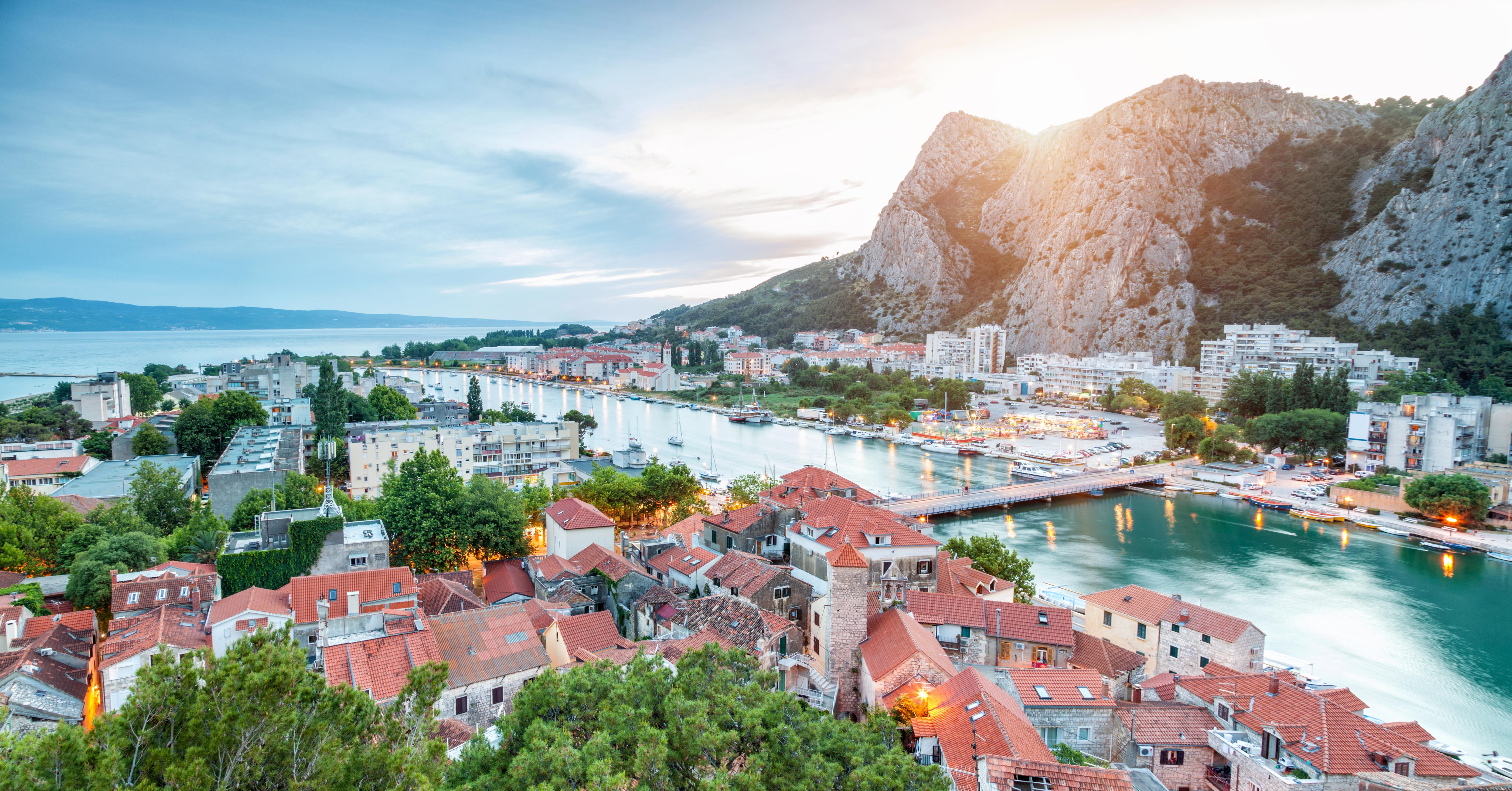
Nestled between towering limestone cliffs and the crystal-clear waters of the Adriatic Sea, the charming town of Omiš was once one of the most feared pirate strongholds in Europe. During the 12th and 13th centuries, the infamous Omiš pirates ruled these waters, using their superior naval skills to ambush merchant ships and control trade routes along the Dalmatian coast. Today, remnants of this swashbuckling past are still visible in the town’s fortresses, narrow alleyways, and hidden coves. Visitors can explore the Mirabella Fortress, a 13th-century watchtower that once served as a pirate lookout, offering breathtaking panoramic views of the coast. A short hike up to the Fortica Fortress, perched high above the town, provides an even more dramatic perspective, with sweeping vistas of the Adriatic islands and rugged mountains beyond. Omiš embraces its pirate legacy with annual battle reenactments, where actors don historical pirate costumes, recreate skirmishes, and celebrate the town’s rebellious spirit.
18. Mostar, Bosnia and Herzegovina: A Testament to Resilience
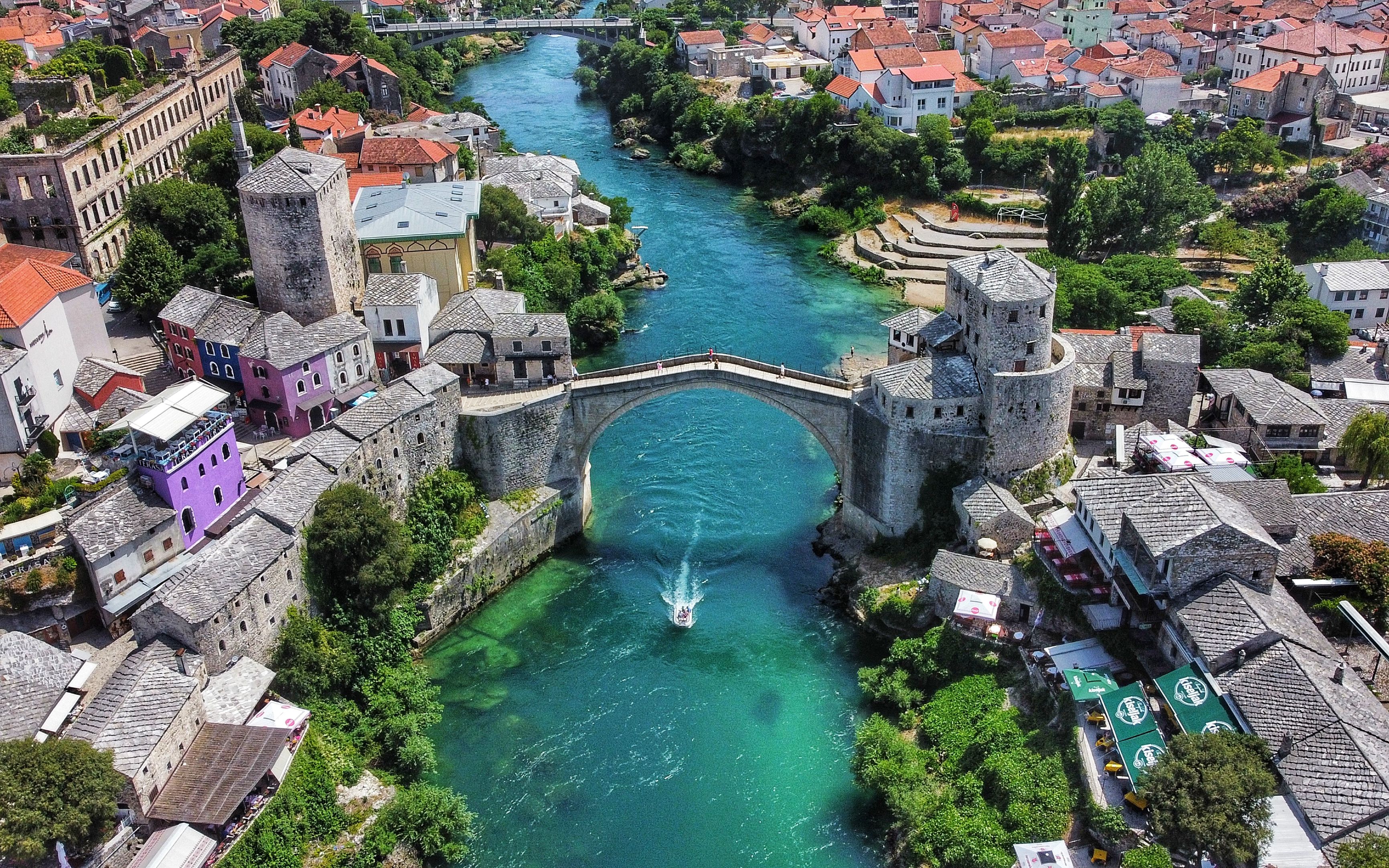
With its fairy-tale setting, Mostar is a city where East meets West, blending the rich influences of Ottoman, Austro-Hungarian, and Mediterranean cultures. At its heart stands the Stari Most (Old Bridge), an architectural masterpiece originally built in the 16th century by the Ottomans. This elegant stone arch became a symbol of unity, connecting the two sides of the Neretva River—until it was tragically destroyed in 1993 during the Bosnian War. Today, the bridge has been meticulously reconstructed using traditional methods, standing once again as a symbol of resilience and peace. Mostar's Old Bazaar (Bazar Kujundžiluk) is a lively, cobbled marketplace that transports visitors back in time. Here, artisans still practice ancient crafts, selling handwoven carpets, intricate copperware, and vibrant textiles in a scene reminiscent of an Ottoman-era trading hub. Tea houses, mosques, and medieval stone buildings line the streets, giving visitors a glimpse into the city’s storied past.
19. Jaén, Spain: The Olive Oil Capital with Renaissance Flair
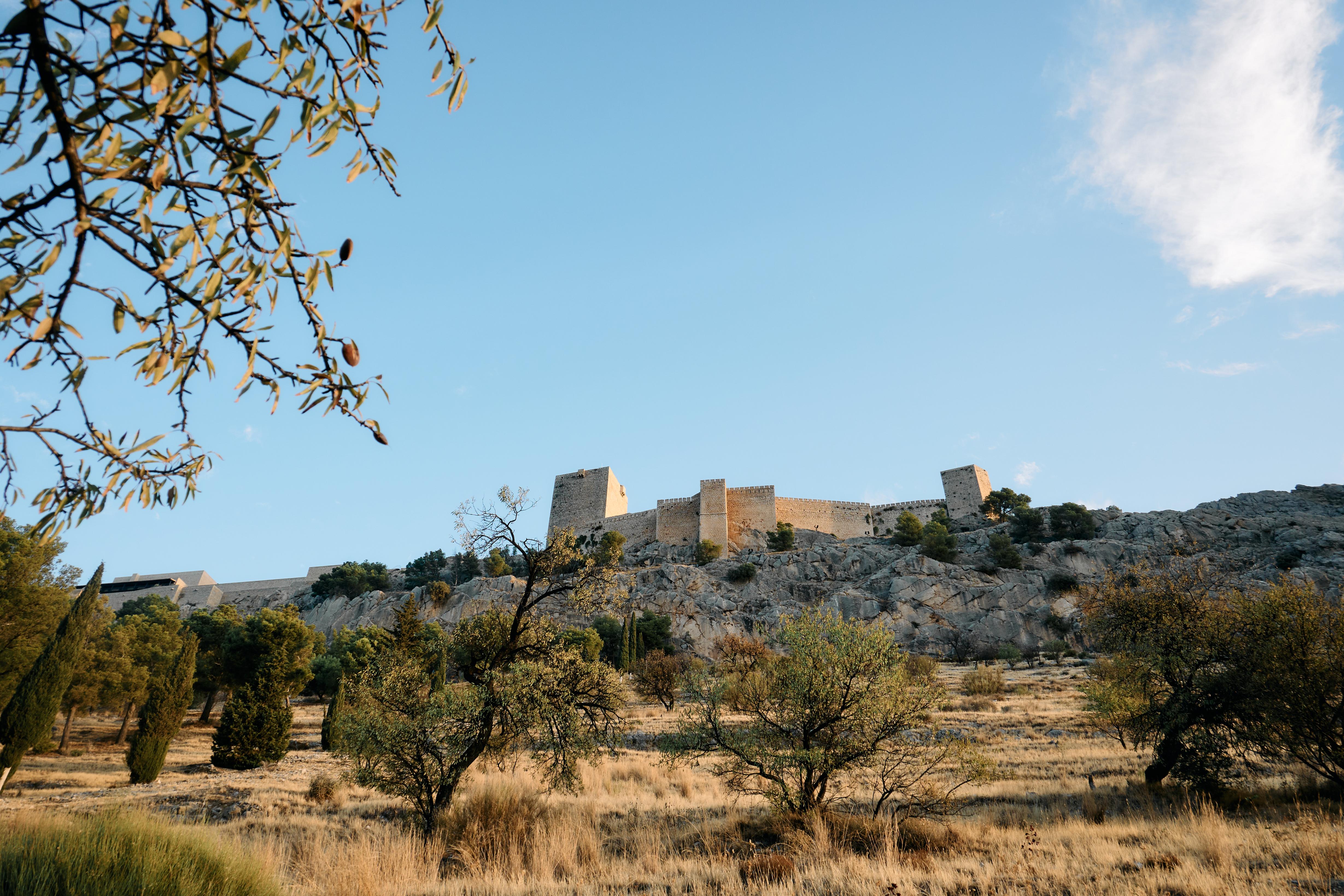
Located in the heart of Andalusia, Jaén is a hidden jewel often overshadowed by its more famous neighbors like Granada and Seville. But those who venture here will be rewarded with breathtaking Renaissance architecture, a deep historical legacy, and an endless sea of olive groves—Jaén is, after all, the undisputed capital of olive oil production, producing some of the finest liquid gold in the world. The city’s crown jewel is the Jaén Cathedral (Catedral de la Asunción), a magnificent example of Spanish Renaissance architecture that inspired other cathedrals across Latin America. Perched high above the city, the Santa Catalina Castle offers stunning panoramic views of Jaén’s picturesque landscape and provides insight into the region’s long history of Moorish and Christian rule.
20. Middleburg, Virginia, USA: A Step Back in Time
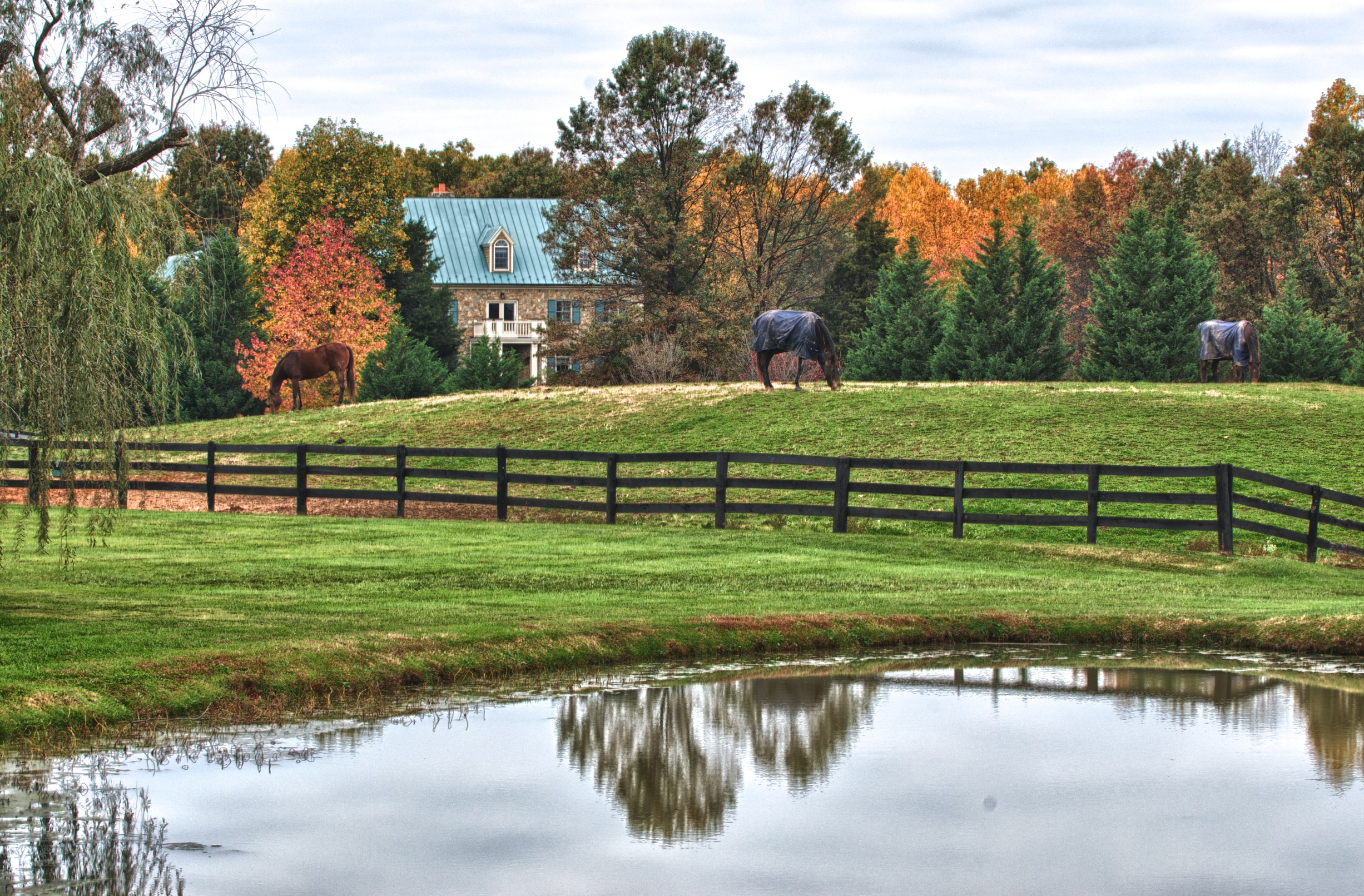
Tucked away in Virginia’s scenic countryside, Middleburg is a charming and historic town that feels like a step back in time. Known as the "Nation’s Horse and Hunt Capital," Middleburg has long been a retreat for equestrians, aristocrats, and history lovers alike. Founded in 1787, the town retains its colonial-era charm, with well-preserved 18th- and 19th-century buildings, cobblestone sidewalks, and a picturesque Main Street lined with boutique shops and historic inns. One of Middleburg’s standout attractions is the National Sporting Library & Museum, which delves into the area’s deep-rooted connection to fox hunting, horse racing, and equestrian culture. If you visit during fall or spring, you may even catch one of the town’s famous horse races or steeplechase events, where locals gather in traditional Southern elegance to celebrate the sport.
21. Iralabarri, Spain: Bilbao's Colorful Quarter
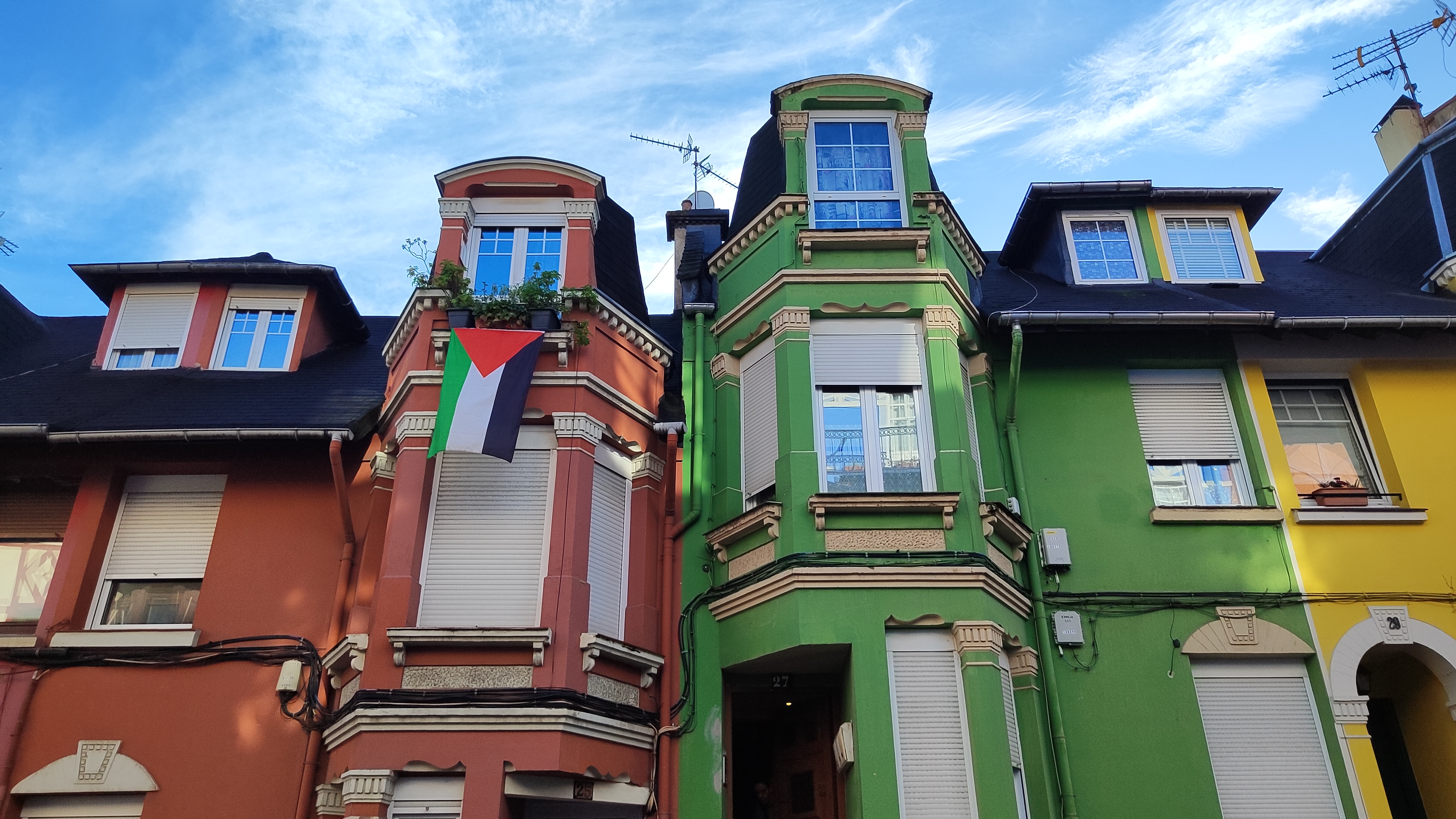
Tucked away from Bilbao’s bustling city center, Iralabarri is a hidden treasure trove of history, architecture, and working-class heritage. Often referred to as the "Notting Hill of Bilbao", this charming neighborhood is renowned for its row of brightly colored, Victorian-style houses, which stand out in a city more commonly associated with industrial heritage and modernist landmarks like the Guggenheim Museum. Iralabarri’s origins date back to 1916, when it was developed as a housing project for Bilbao’s working-class residents. During the height of Bilbao’s industrial boom, factory workers needed affordable yet comfortable homes close to their workplaces, and Iralabarri provided a visionary urban alternative. Its Victorian-inspired architecture, with ornate balconies, decorative facades, and pastel hues, reflected a more aspirational vision of housing, different from the utilitarian worker districts in other Spanish cities.
22. Toruń, Poland: The Gothic Gem
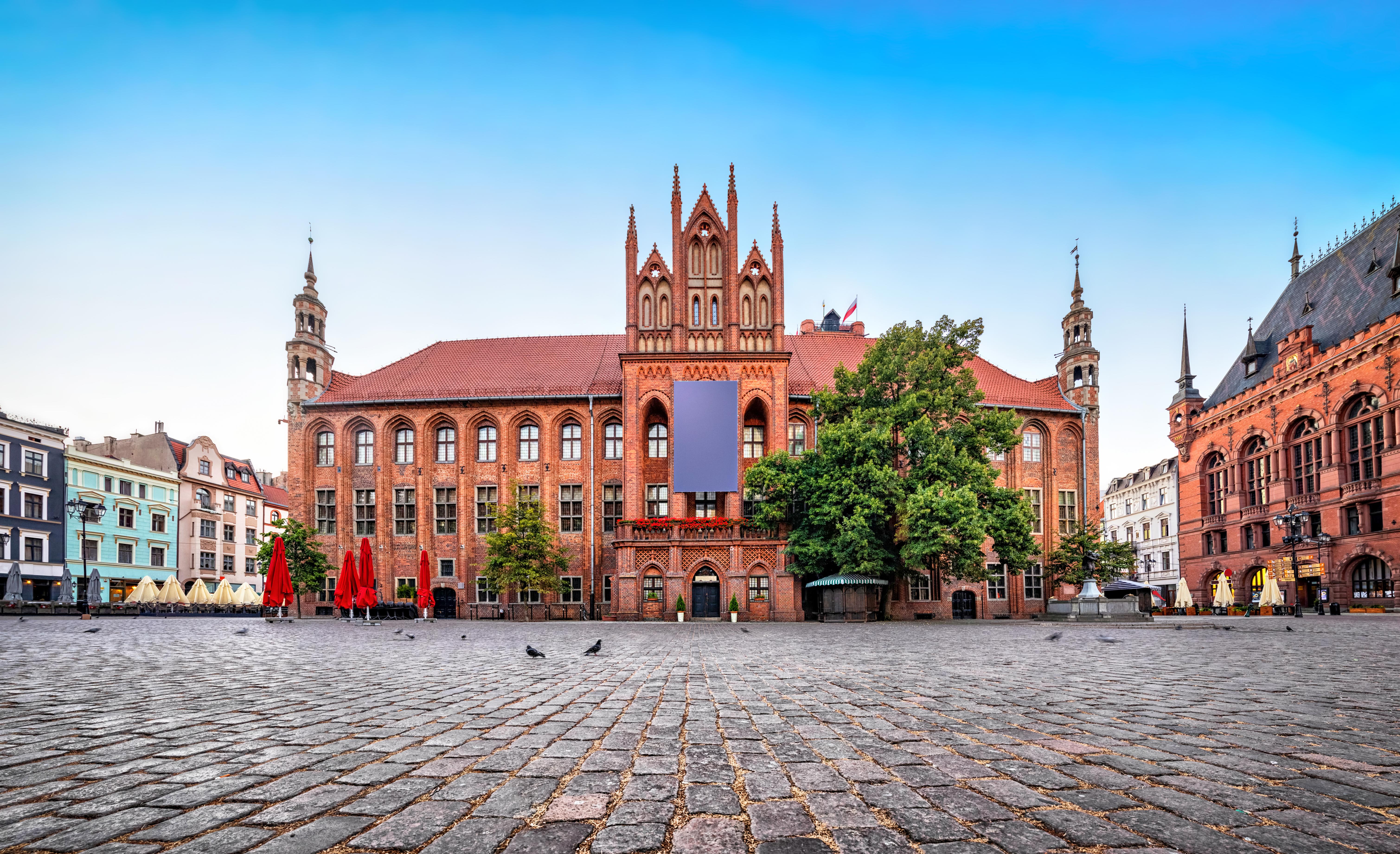
With its cobblestone streets, towering Gothic cathedrals, and medieval charm, Toruń is one of Poland’s most beautifully preserved historic cities. This riverside gem, located along the Vistula River, was the birthplace of the great astronomer Nicolaus Copernicus, whose groundbreaking theories reshaped our understanding of the universe. A UNESCO World Heritage site, Toruń’s Old Town is a masterpiece of Gothic architecture, with buildings that have stood untouched for centuries. Among its most striking landmarks is the Toruń Town Hall, an architectural marvel dating back to the 14th century, with its intricate brickwork and towering clock tower offering panoramic views over the city. The town’s medieval walls and fortified gates, once used to defend against invaders, now serve as a stunning reminder of its historic significance.
23. Turku, Finland: The Medieval Capital
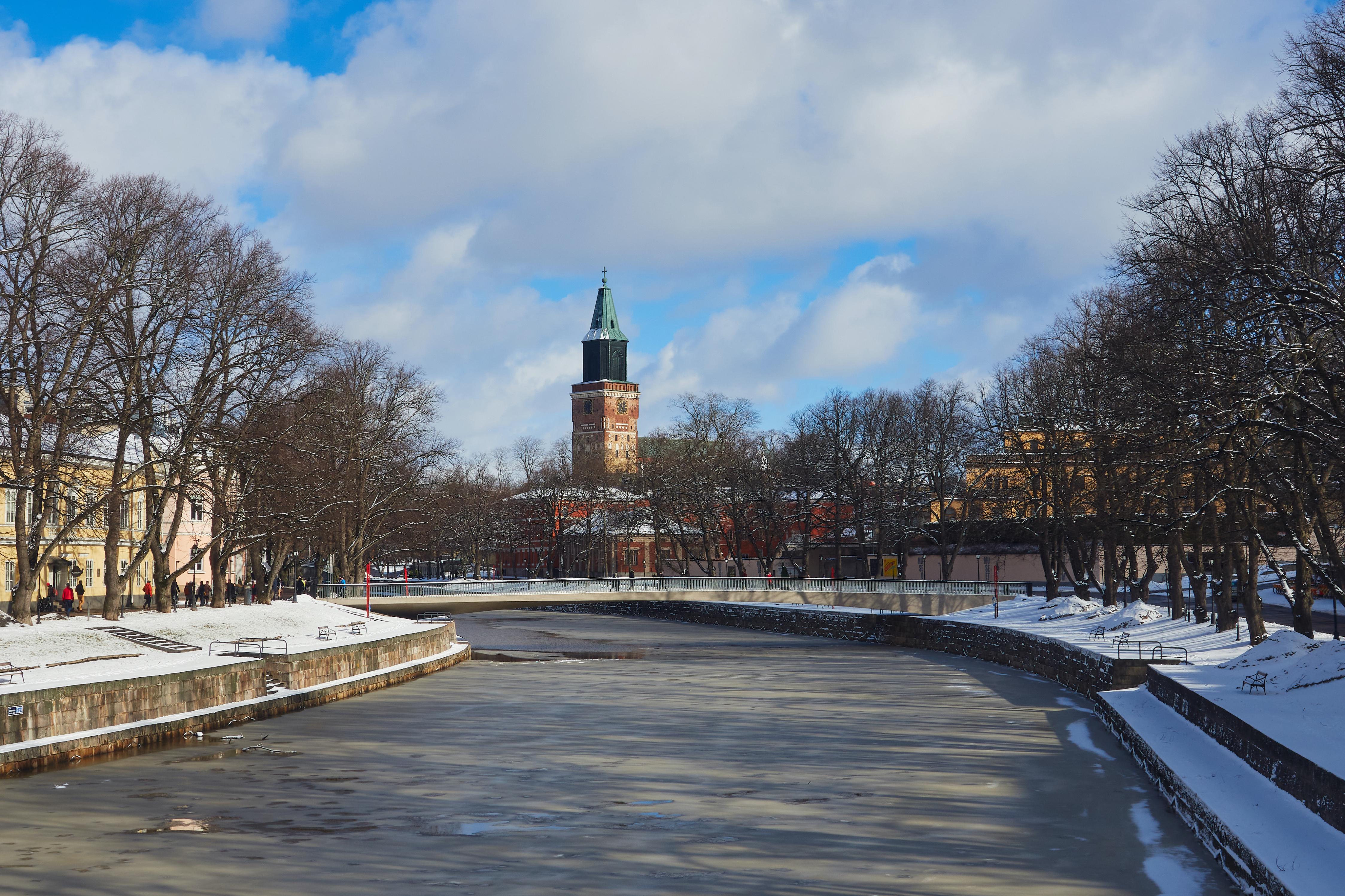
As Finland’s oldest city, Turku is a treasure trove of medieval architecture, Viking heritage, and rich Nordic traditions. Nestled along the Aura River, Turku was the country's first capital before Helsinki took its place in the 19th century. Yet, Turku remains Finland’s cultural heart, where past and present merge beautifully. The city’s most iconic landmark is Turku Castle, a 13th-century fortress that has withstood centuries of wars, fires, and political turmoil. Today, it houses a fascinating museum showcasing Finnish history, with everything from ancient weaponry and royal chambers to eerie dungeons. Nearby, the Turku Cathedral, Finland’s oldest and most important church, towers over the city, its grand interior filled with medieval frescoes and historic tombs.
24. Rovinj, Croatia: The Adriatic's Hidden Treasure
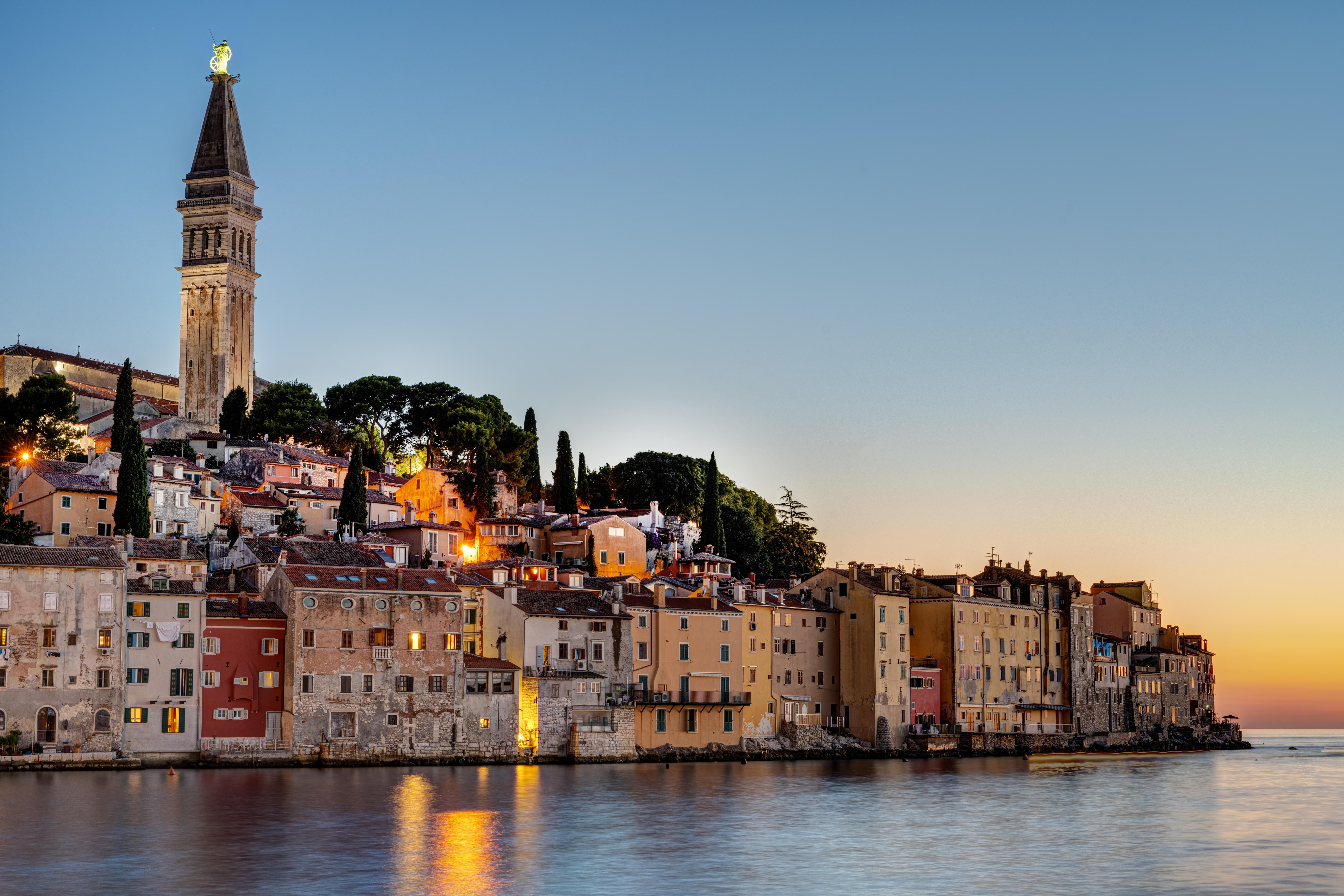
Perched on the rocky shores of the Adriatic, Rovinj is a picture-perfect coastal town where history, art, and the sea intertwine. Once part of the Venetian Republic, Rovinj still carries strong Italian influences, from its pastel-colored houses to the melodic echoes of Italian spoken in its narrow alleyways. At the heart of Rovinj stands St. Euphemia’s Church, a stunning hilltop basilica that offers panoramic views of the Adriatic. The town’s labyrinthine streets, once navigated by Venetian merchants and fishermen, lead to hidden art galleries, cozy wine bars, and family-run seafood taverns. For those eager to explore beyond the town, Rovinj’s surrounding waters are dotted with over a dozen small islands, ideal for boat trips, snorkeling, and seaside picnics. Just a short drive away, the Brijuni National Park—once a private retreat for Yugoslav leader Tito—invites visitors to walk among ancient Roman ruins, olive groves, and untouched beaches.
25. Rothenburg ob der Tauber, Germany: A Fairytale Town
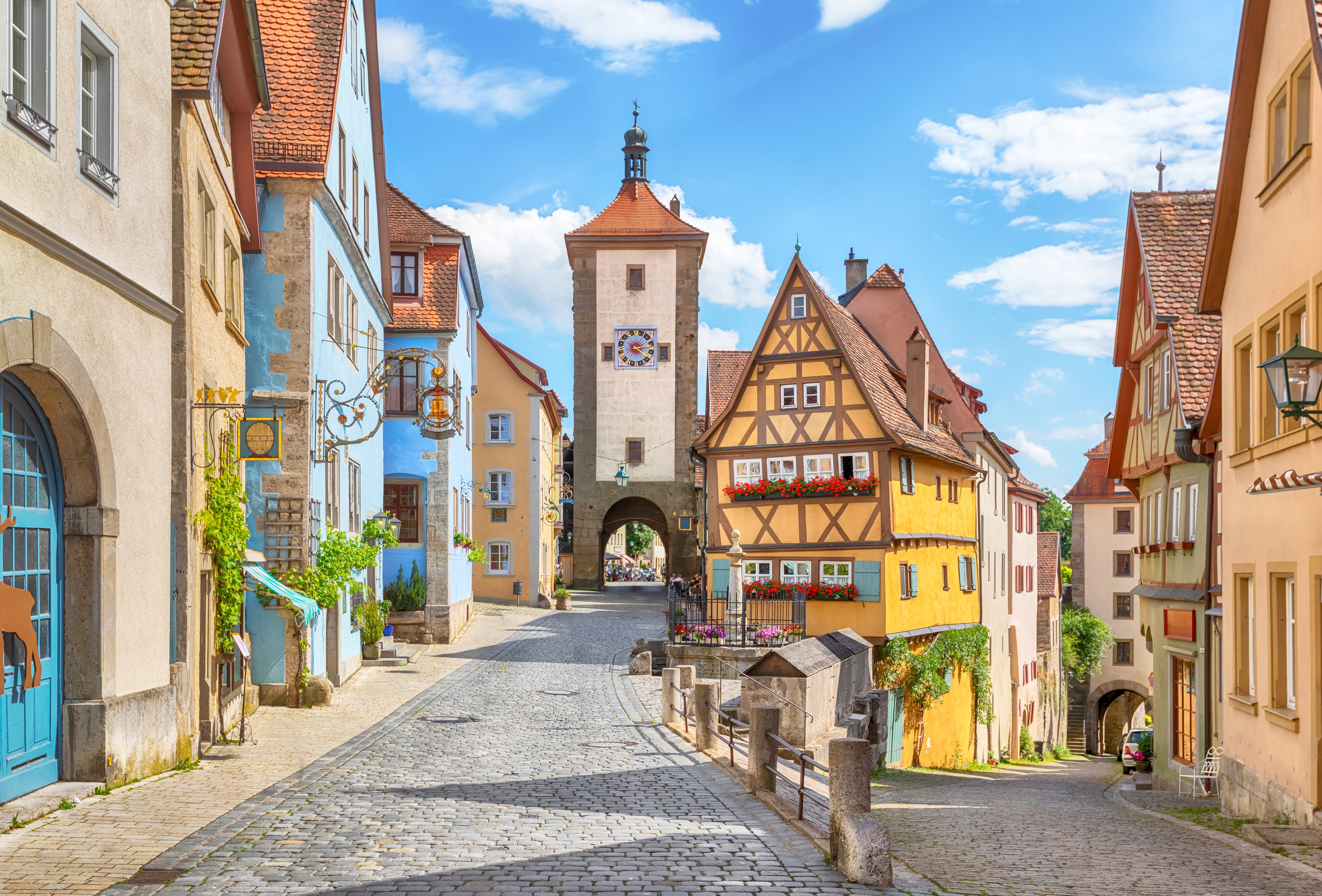
With its medieval walls, half-timbered houses, and cobblestone streets, Rothenburg ob der Tauber is one of Germany’s most beautifully preserved medieval towns. Walking through its streets feels like stepping into a Brothers Grimm fairytale, with every turn revealing storybook scenery straight from the Middle Ages. The Market Square serves as the town’s beating heart, surrounded by Gothic and Renaissance buildings, while the Medieval Crime Museum offers a fascinating (and sometimes eerie) look into historic European law and punishment. Visitors can climb the Town Hall Tower for breathtaking views or walk along the intact medieval walls, peering down at the rooftops that haven’t changed in centuries. Rothenburg is also famous for its Christmas traditions, hosting one of Germany’s most magical holiday markets. Whether you visit in summer or winter, this timeless village will transport you to another era.
26. Nafplio, Greece: The First Capital
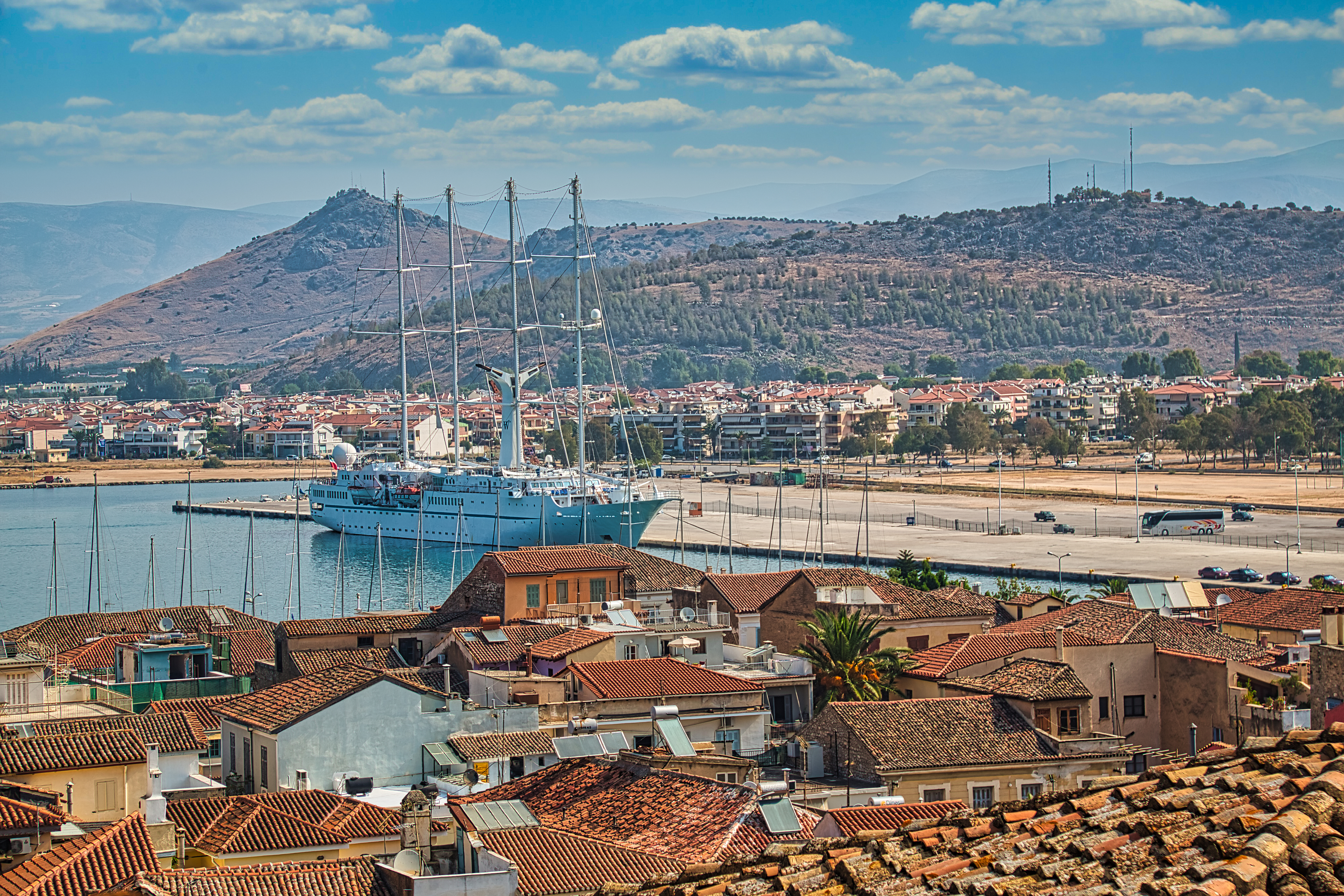
Often regarded as Greece’s most romantic town, Nafplio is a seaside escape brimming with neoclassical charm, Venetian fortresses, and Ottoman influences. As Greece’s first modern capital, it played a crucial role in the country’s fight for independence. Its Old Town is a delight of cobblestone alleys, bougainvillea-draped balconies, and elegant Italianate mansions, while the Bourtzi Fortress, sitting on an islet in the harbor, adds to its cinematic charm. History lovers will also be drawn to Palamidi Fortress, a massive hilltop citadel with panoramic views over the Argolic Gulf. With its rich history, stunning coastal setting, and relaxed Mediterranean ambiance, Nafplio offers a slice of Greece that feels both ancient and timeless.
A Timeless Journey Through History
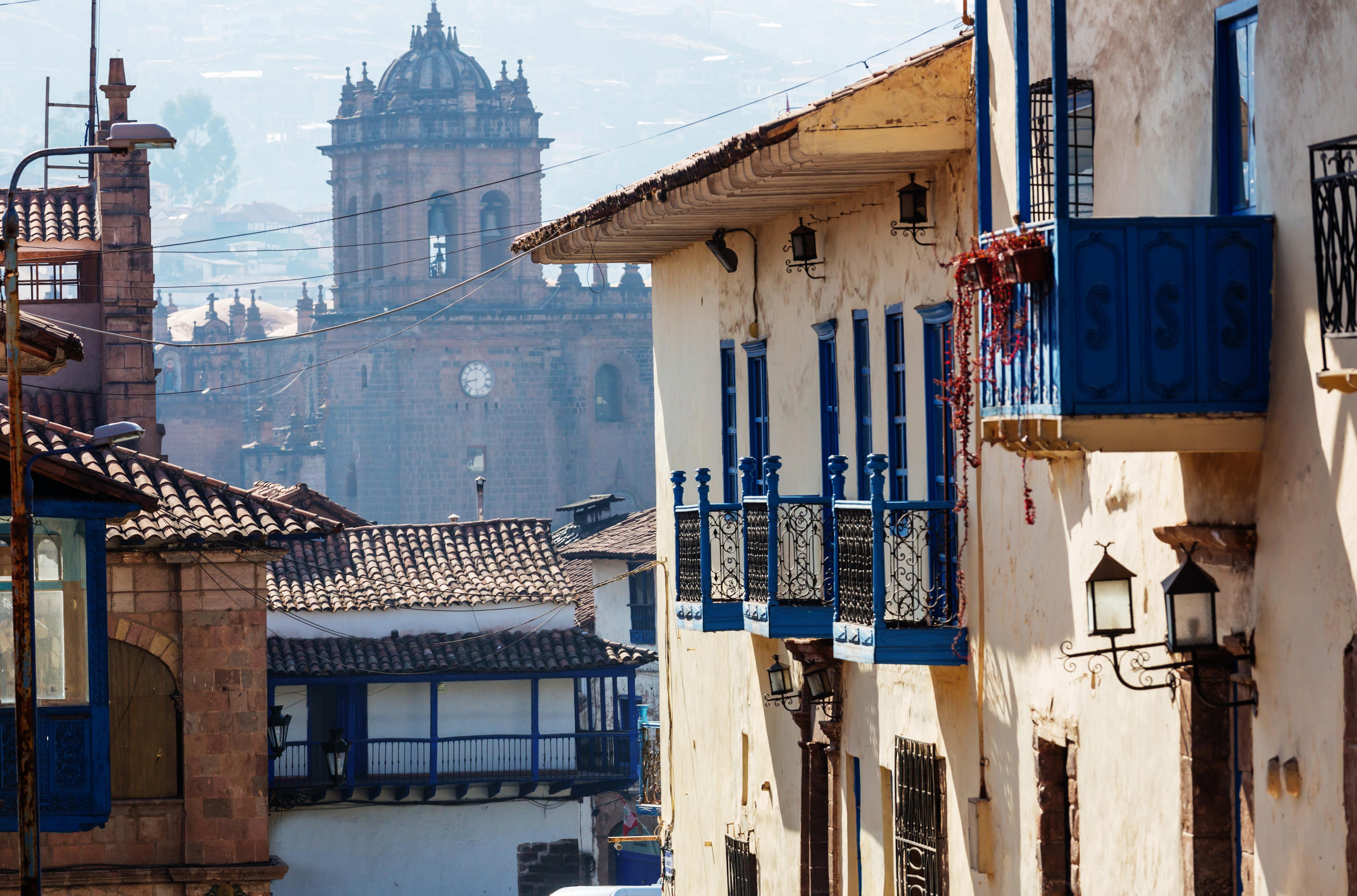
The journey through these 26 timeless cities offers a unique opportunity to step back in time and explore the rich history and culture of our world. Each city, with its unique charm and story, provides a window into the past, offering insights into the civilizations and cultures that have shaped our world. From the ancient ruins of Rome and Athens to the vibrant streets of Havana and Mexico City, these cities are living museums that continue to inspire and captivate visitors. As we conclude this journey through history, we are reminded of the importance of preserving our cultural heritage and honoring the stories of the past. These cities, with their timeless beauty and historical significance, serve as a testament to the resilience and creativity of human civilization. They invite us to explore, learn, and appreciate the rich tapestry of our shared history, offering a timeless journey through the ages.

